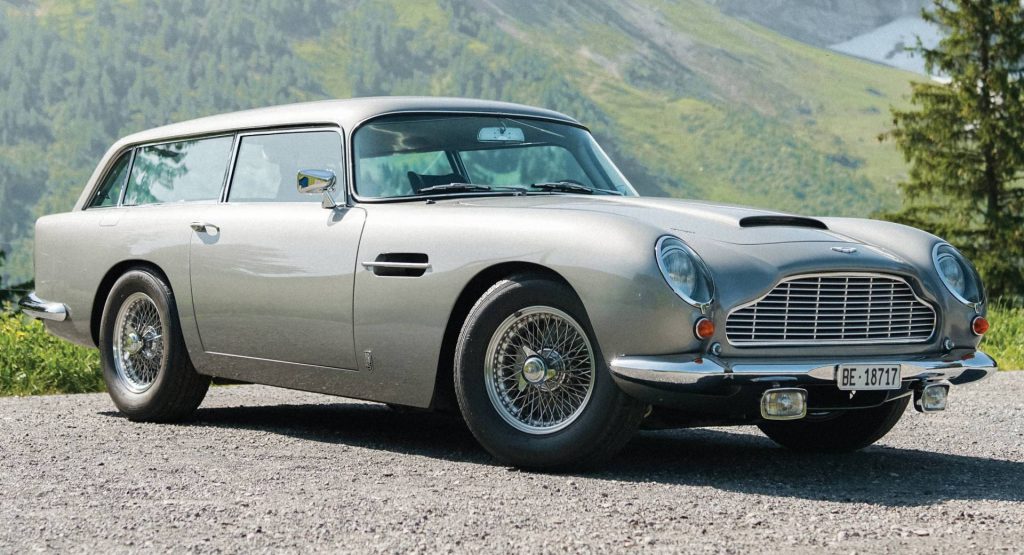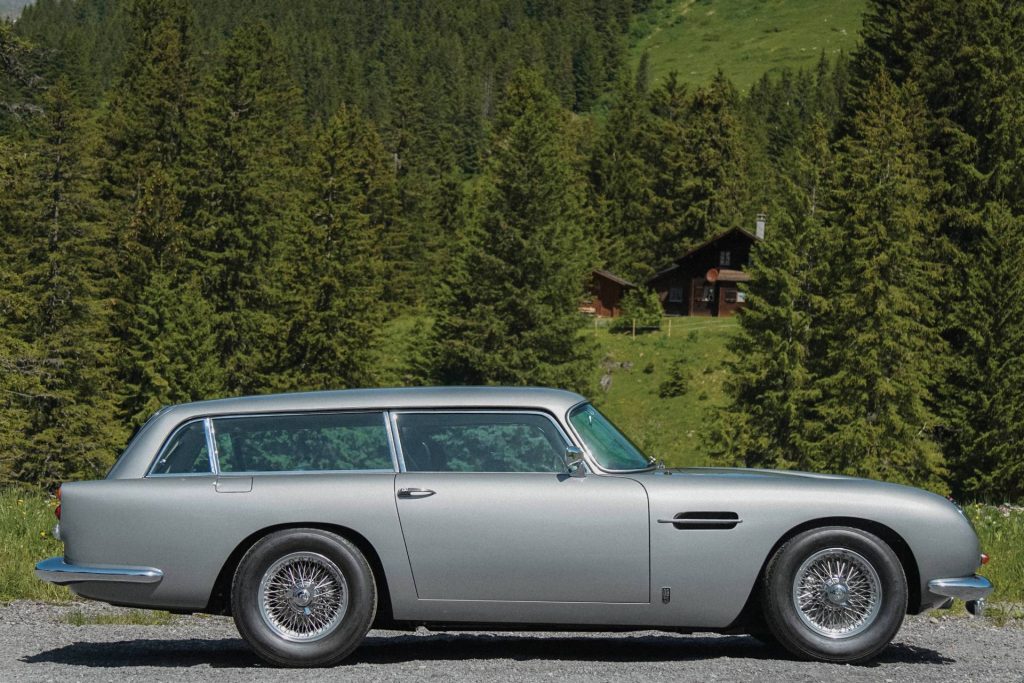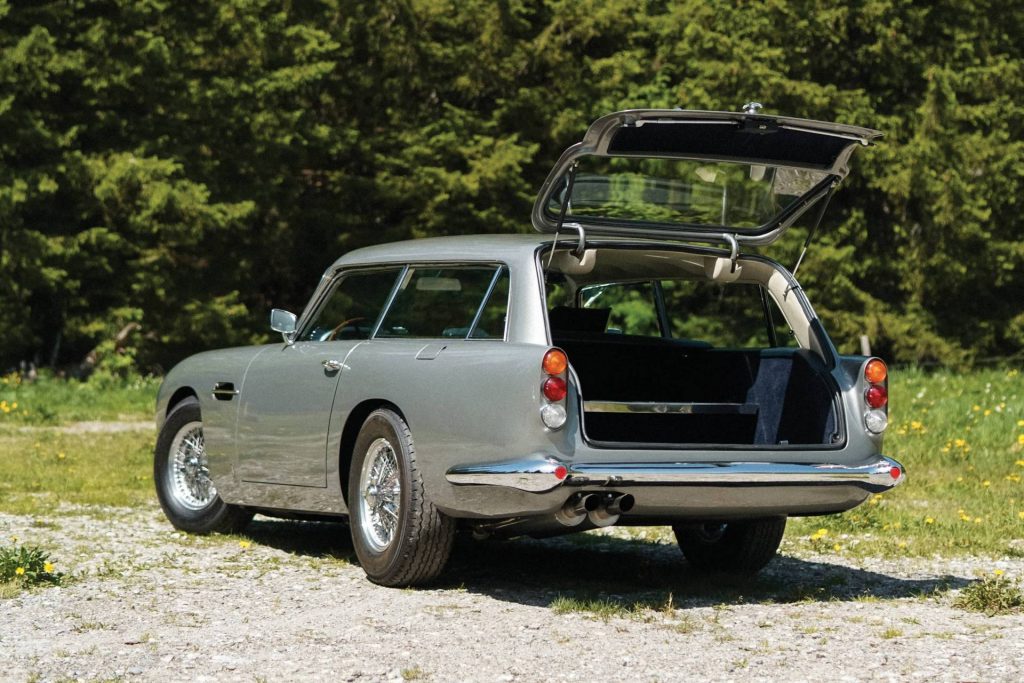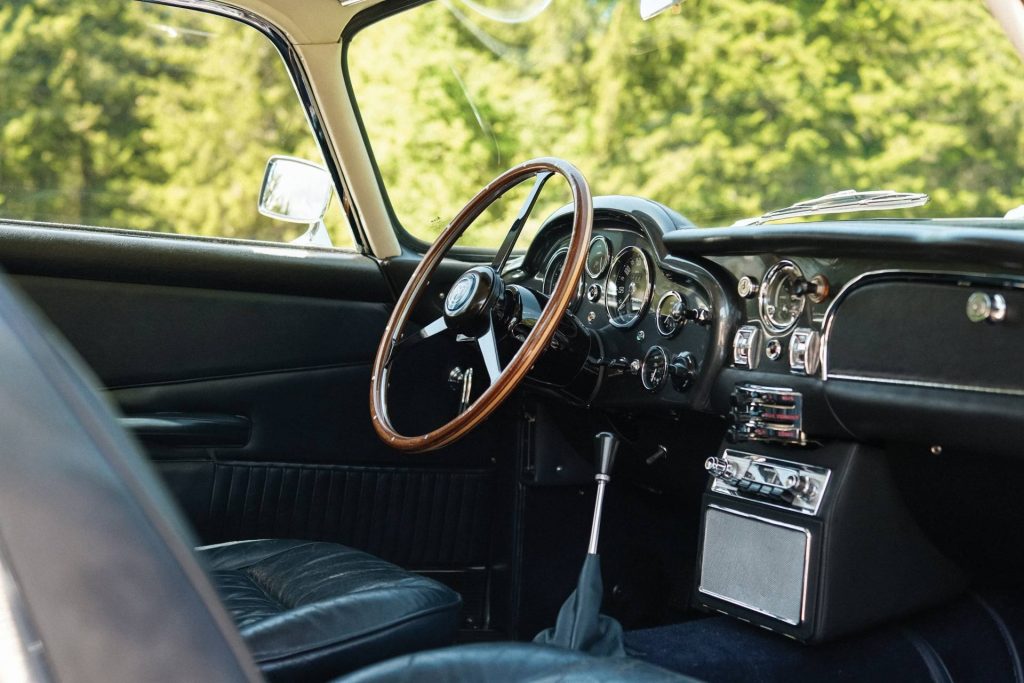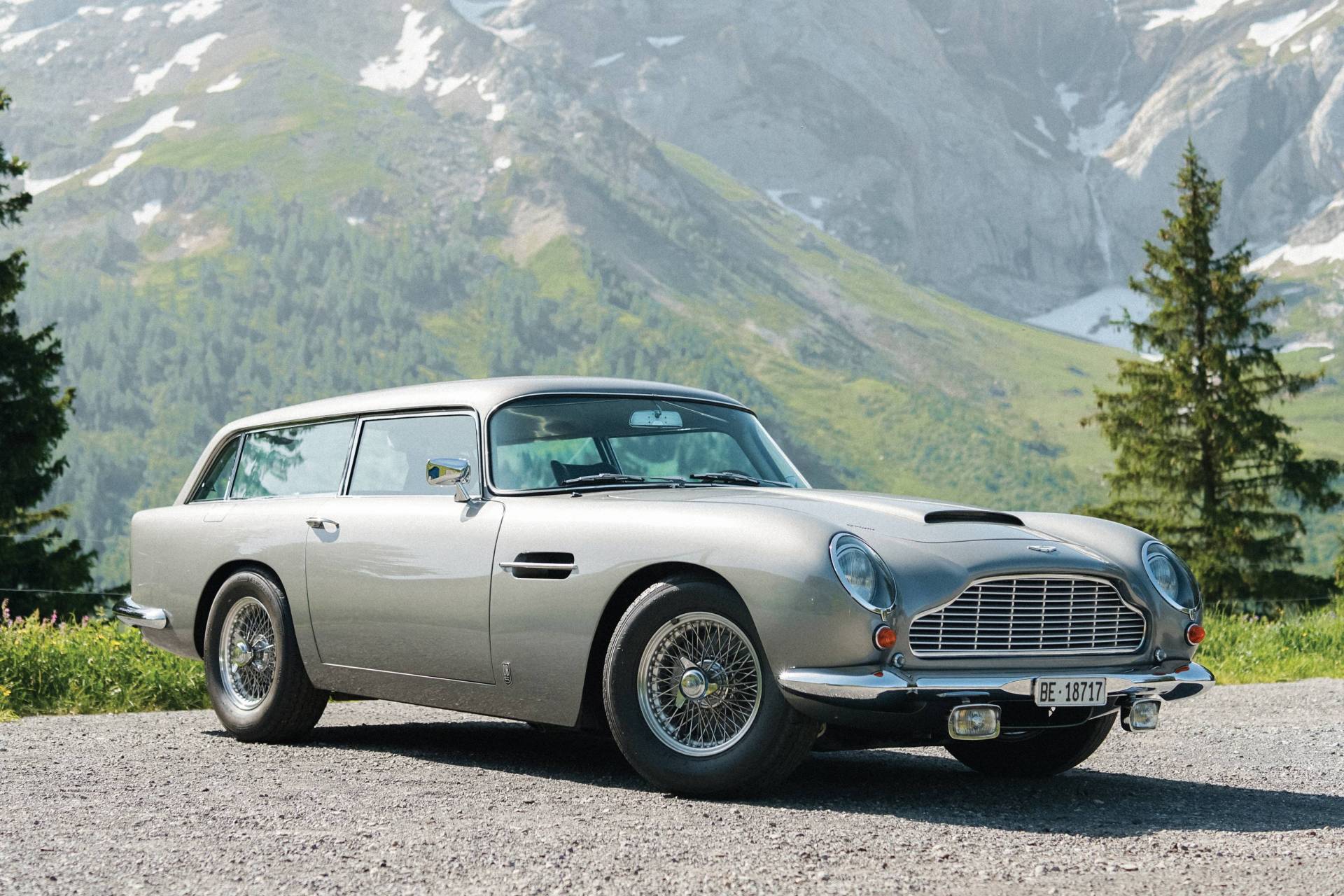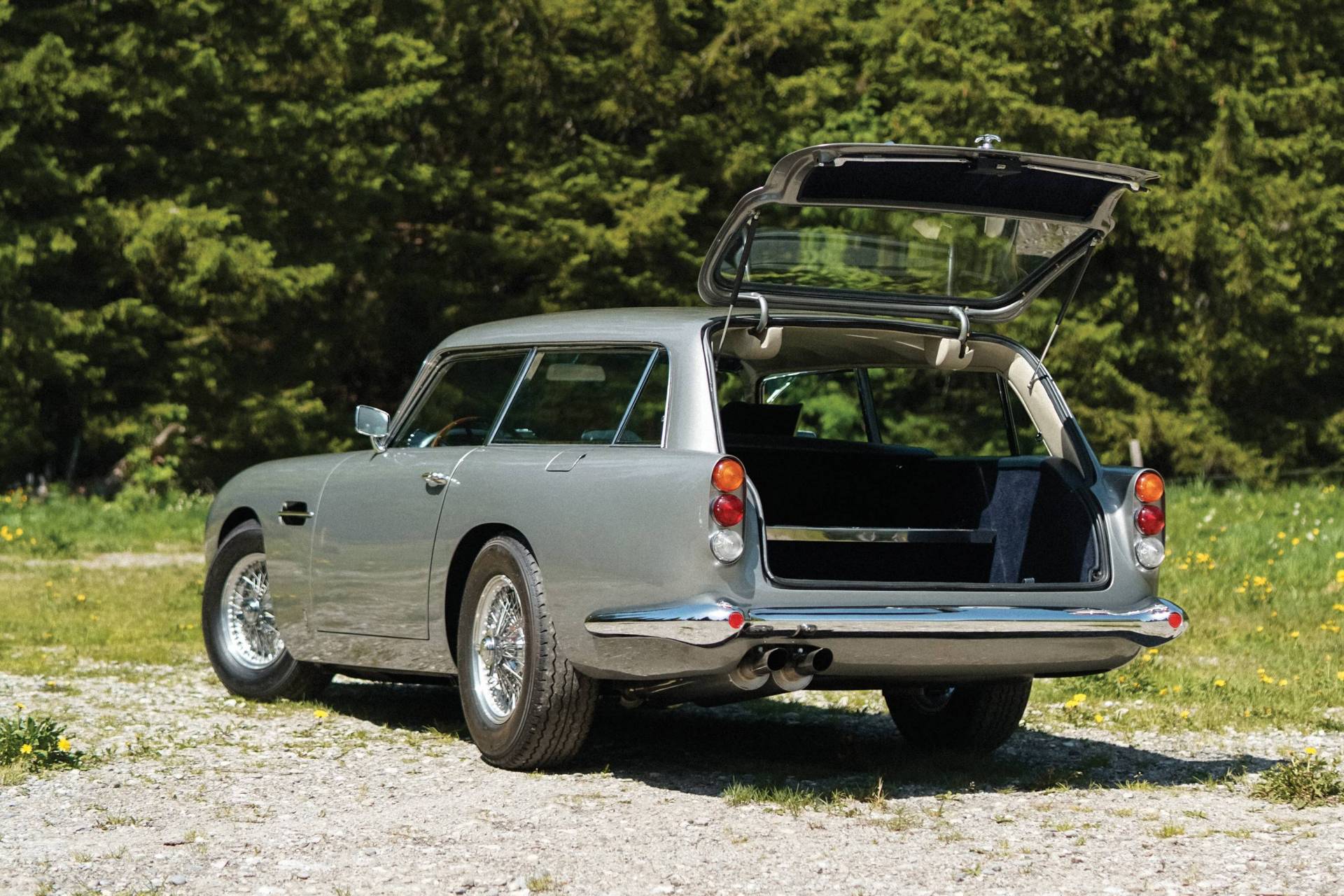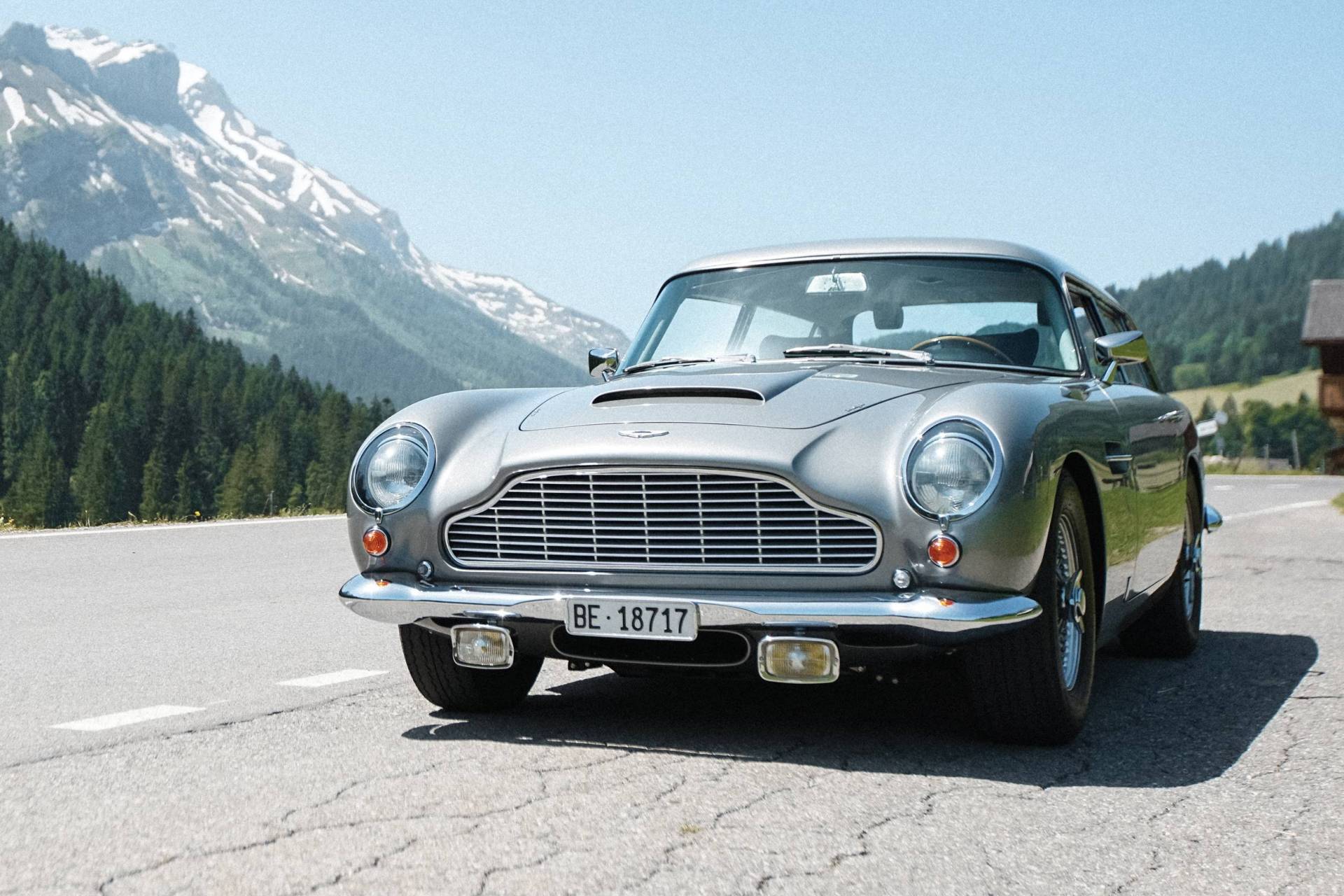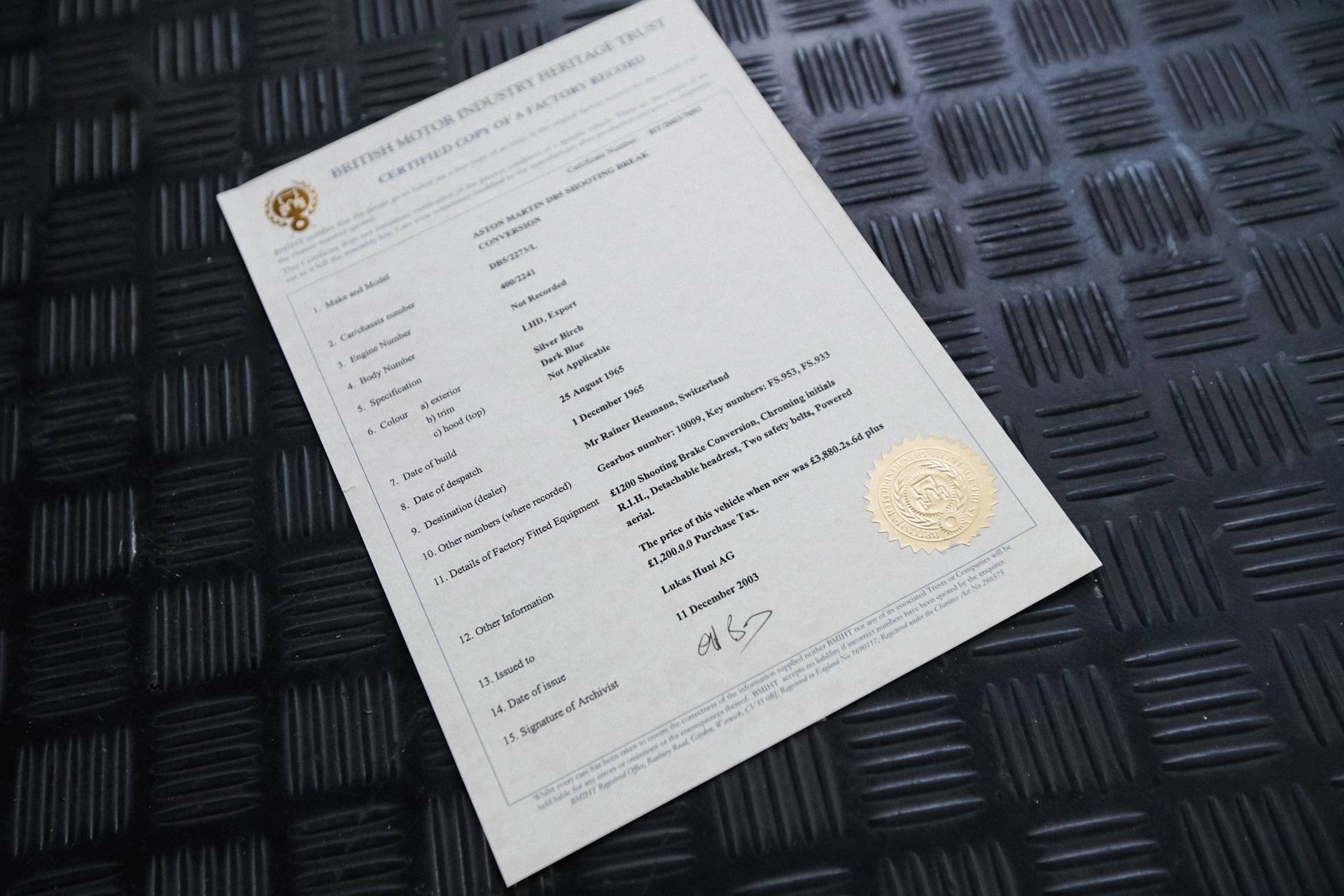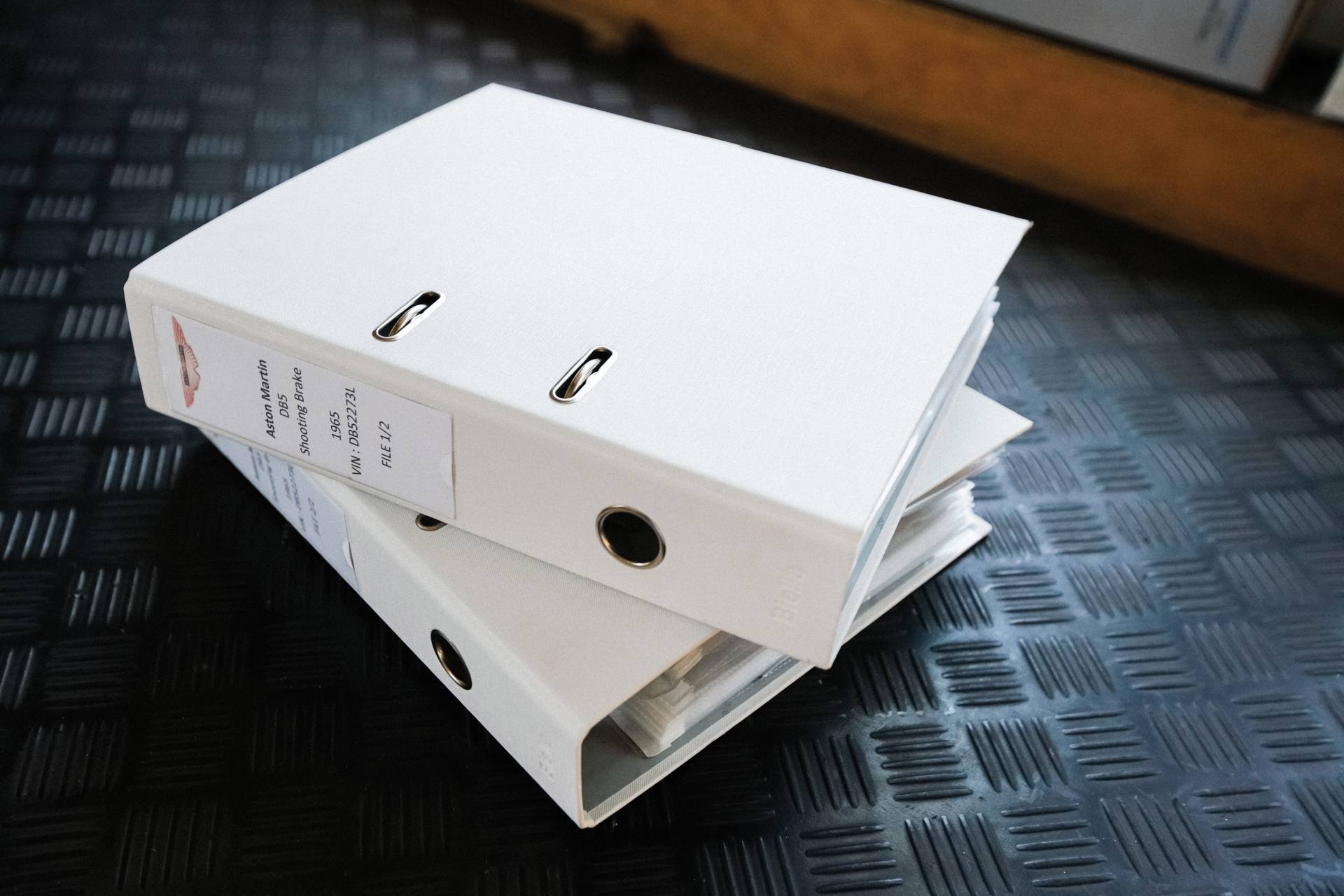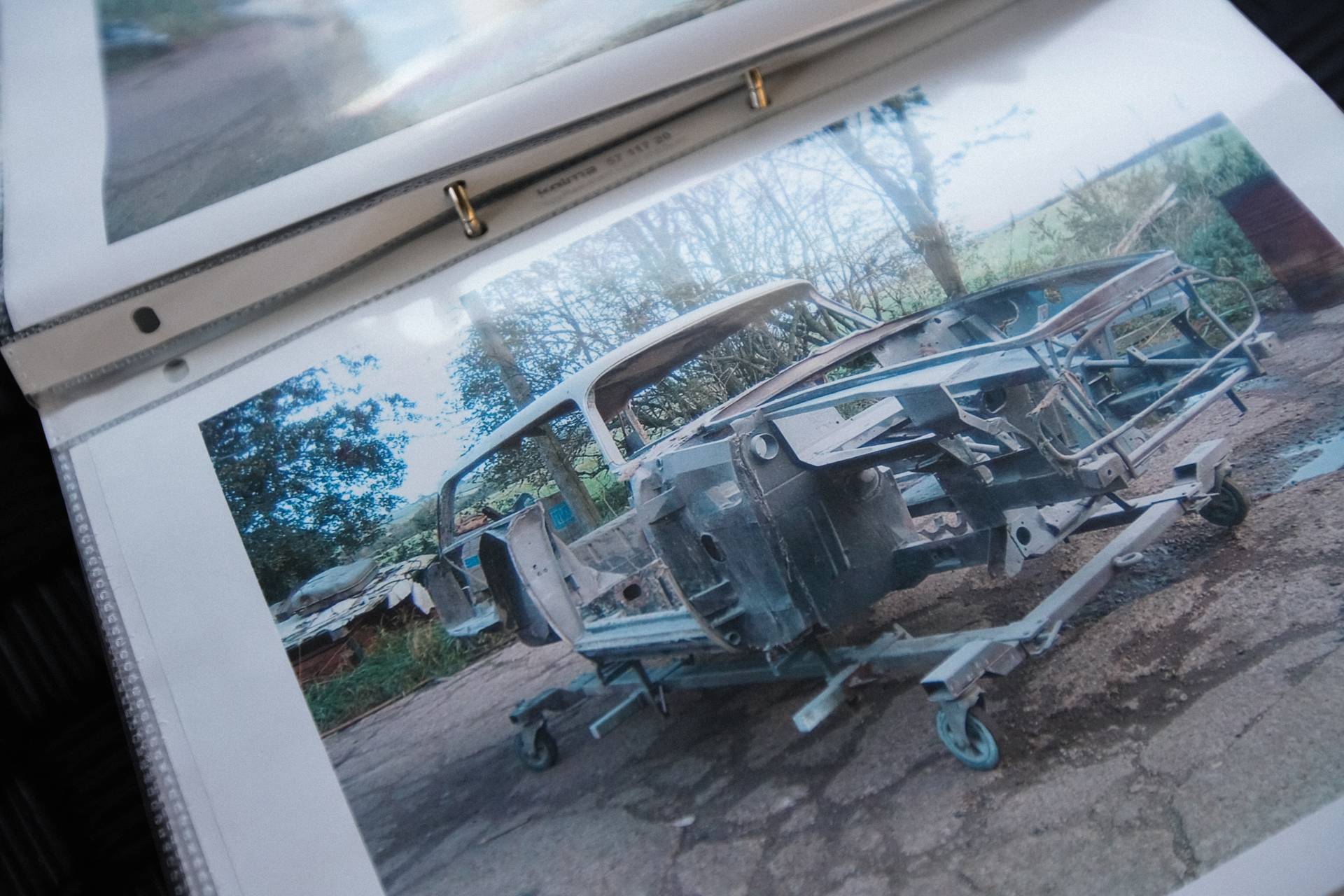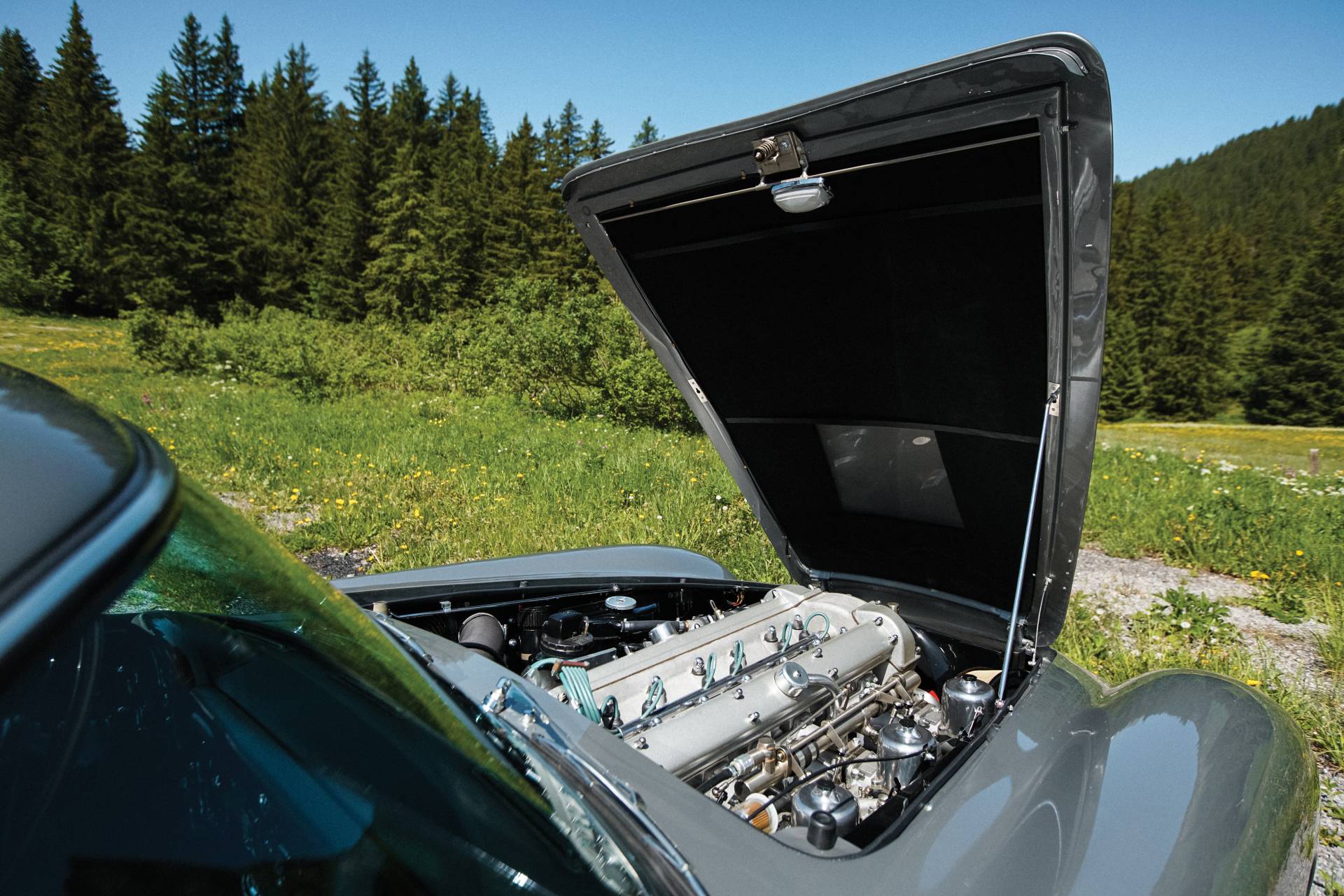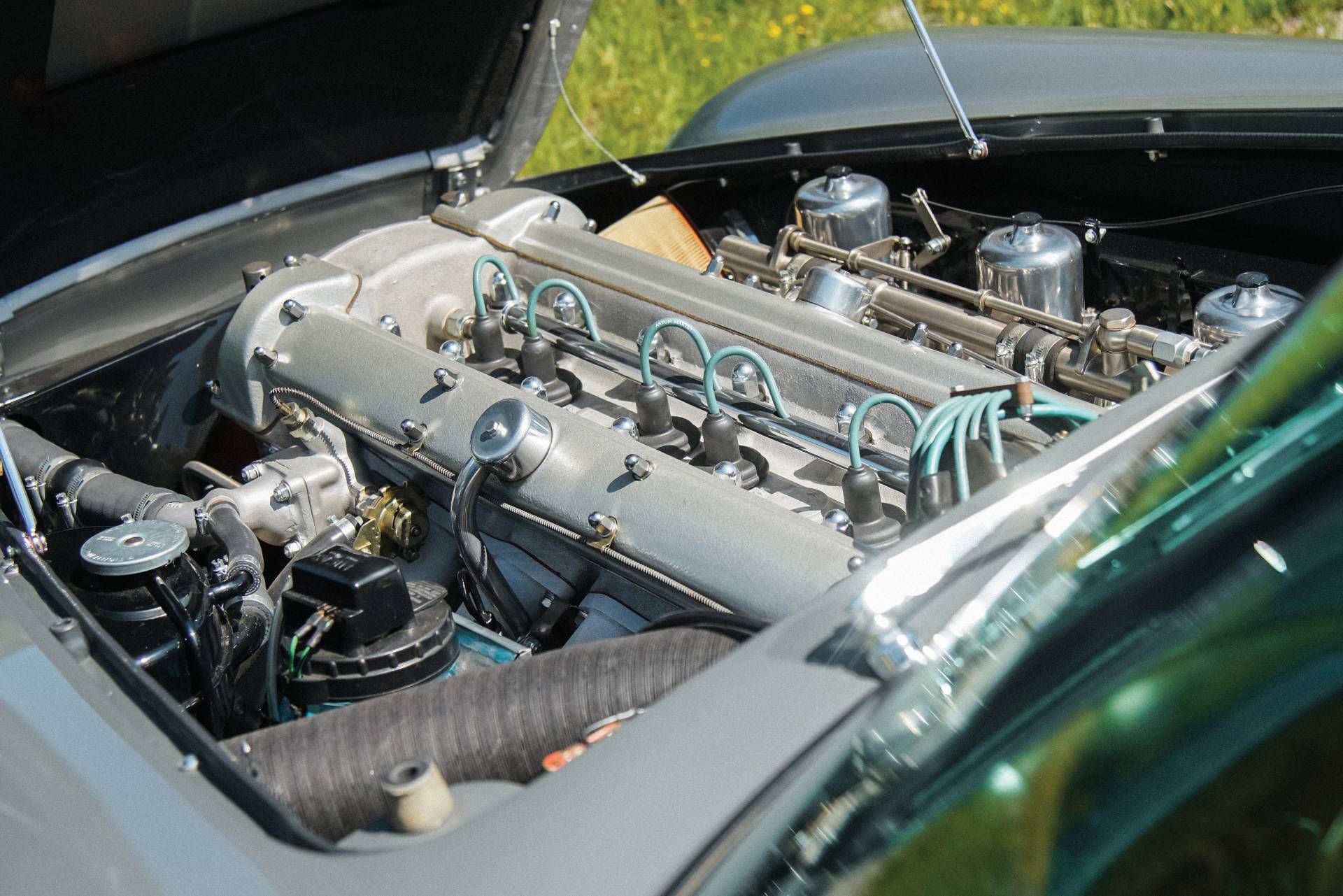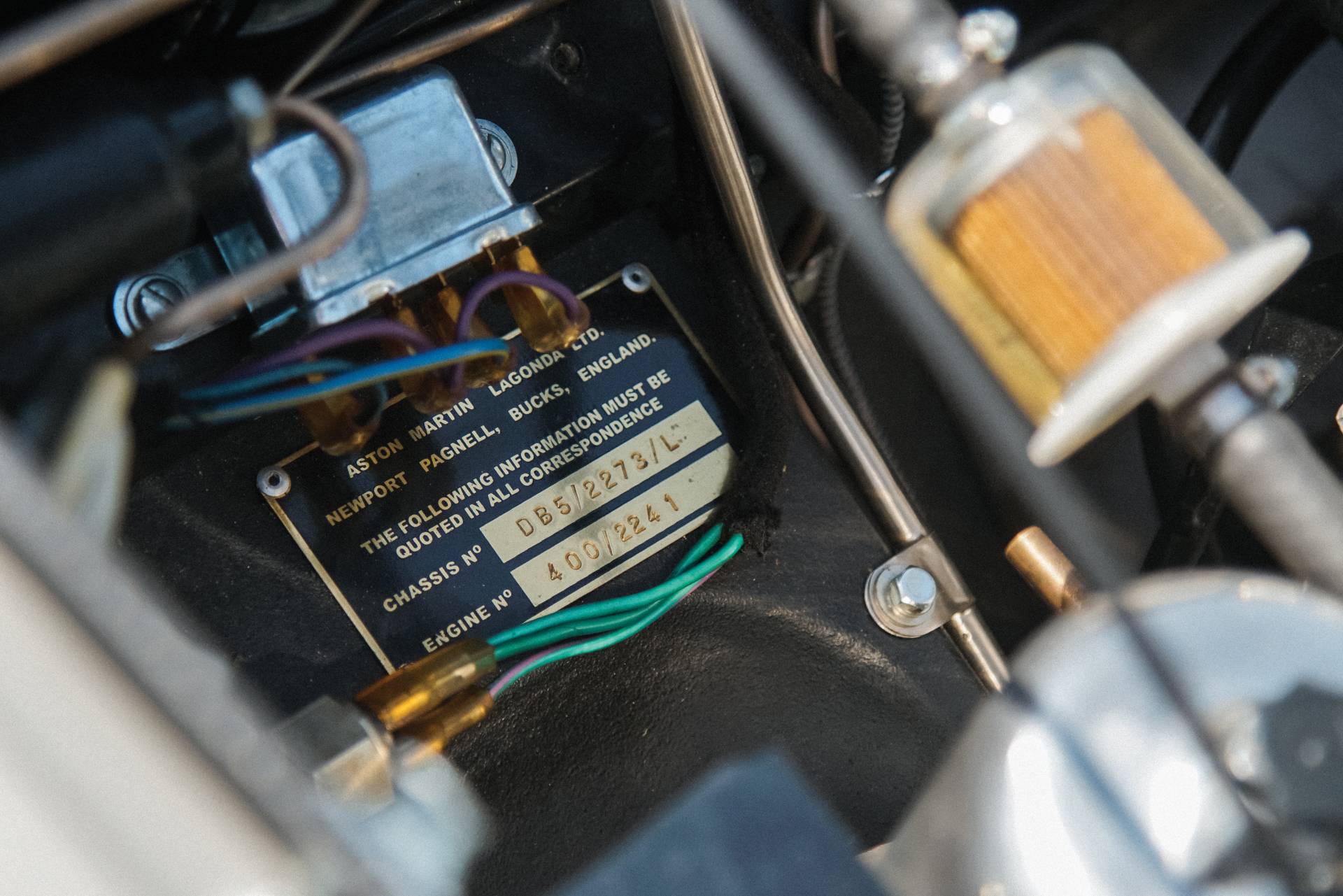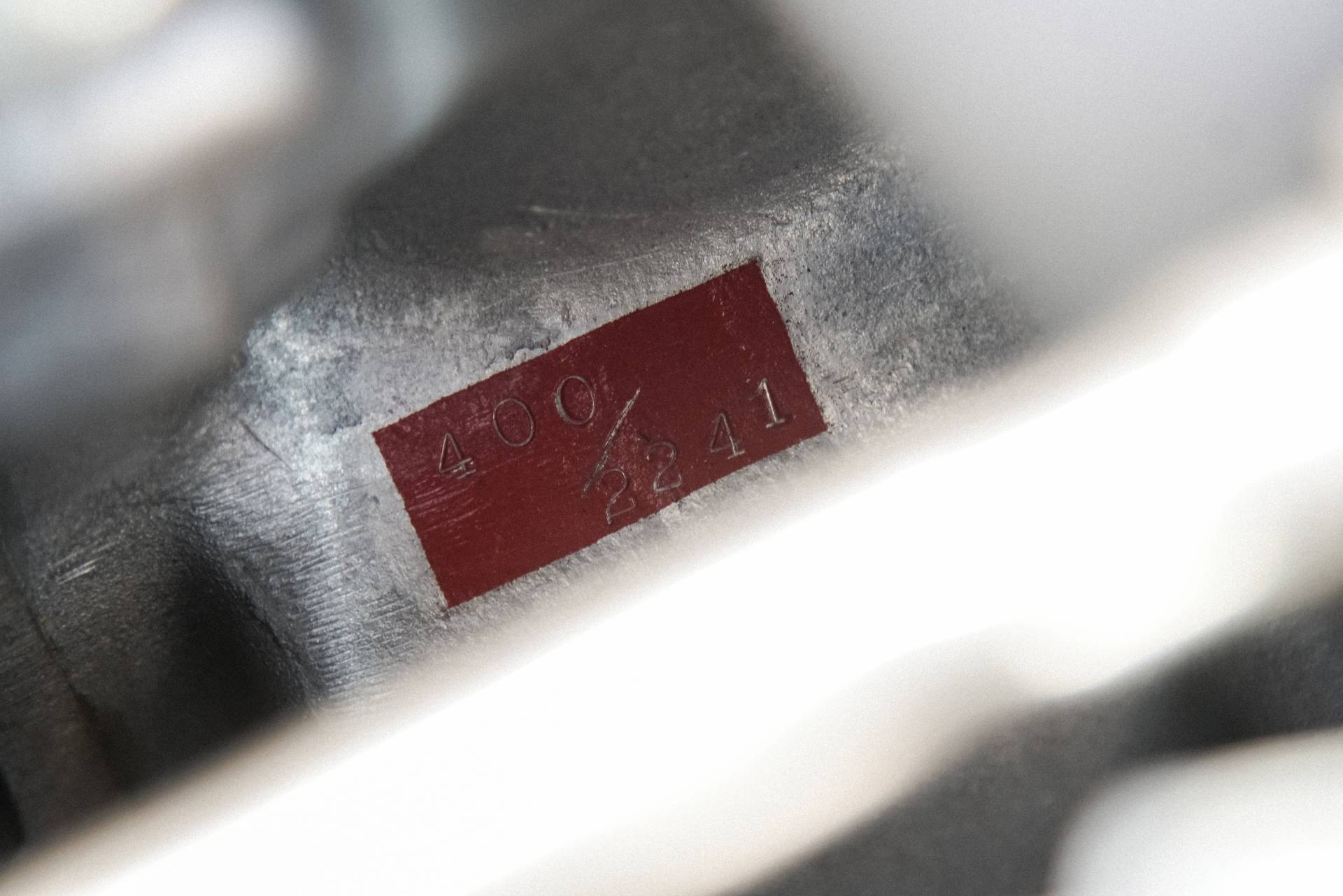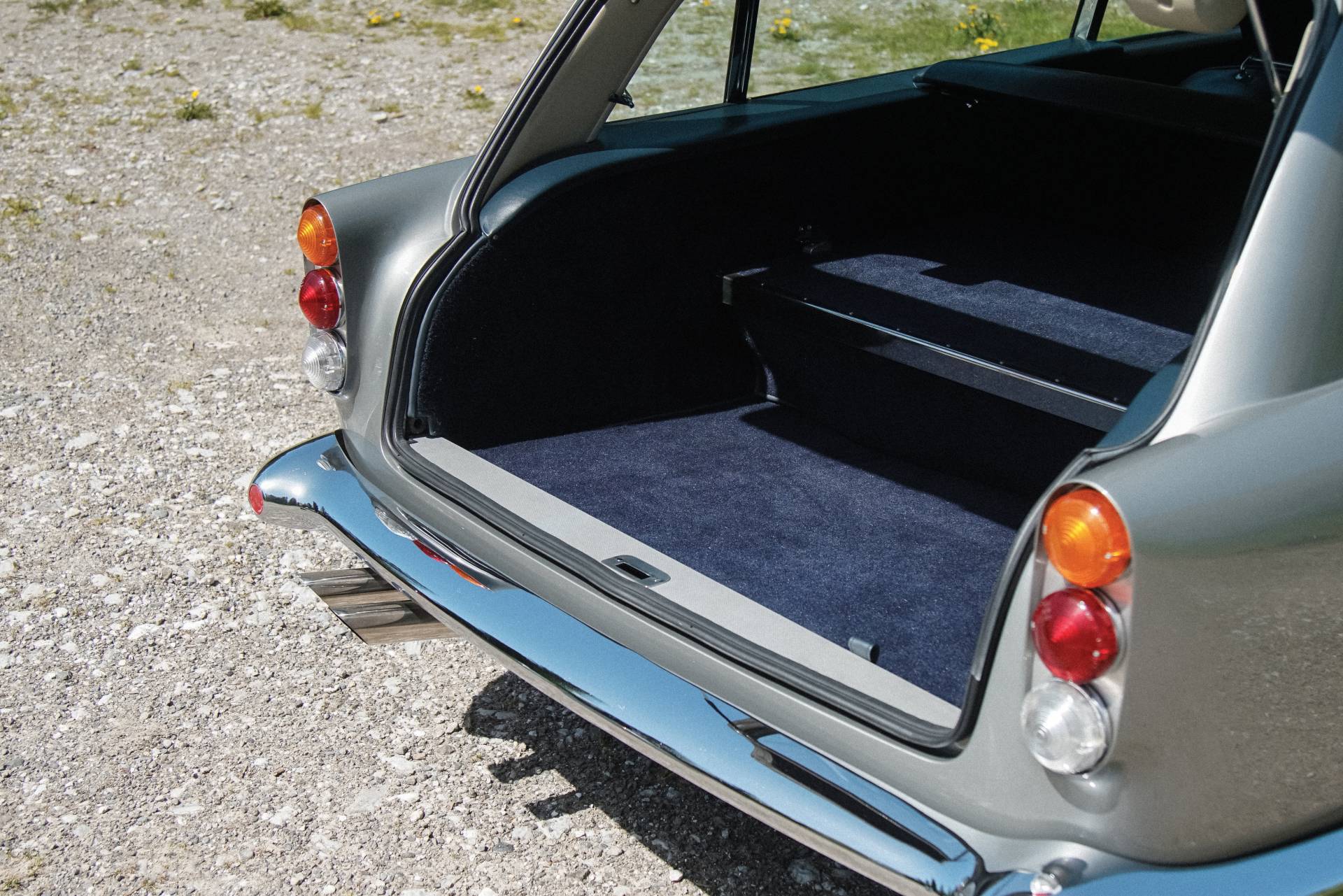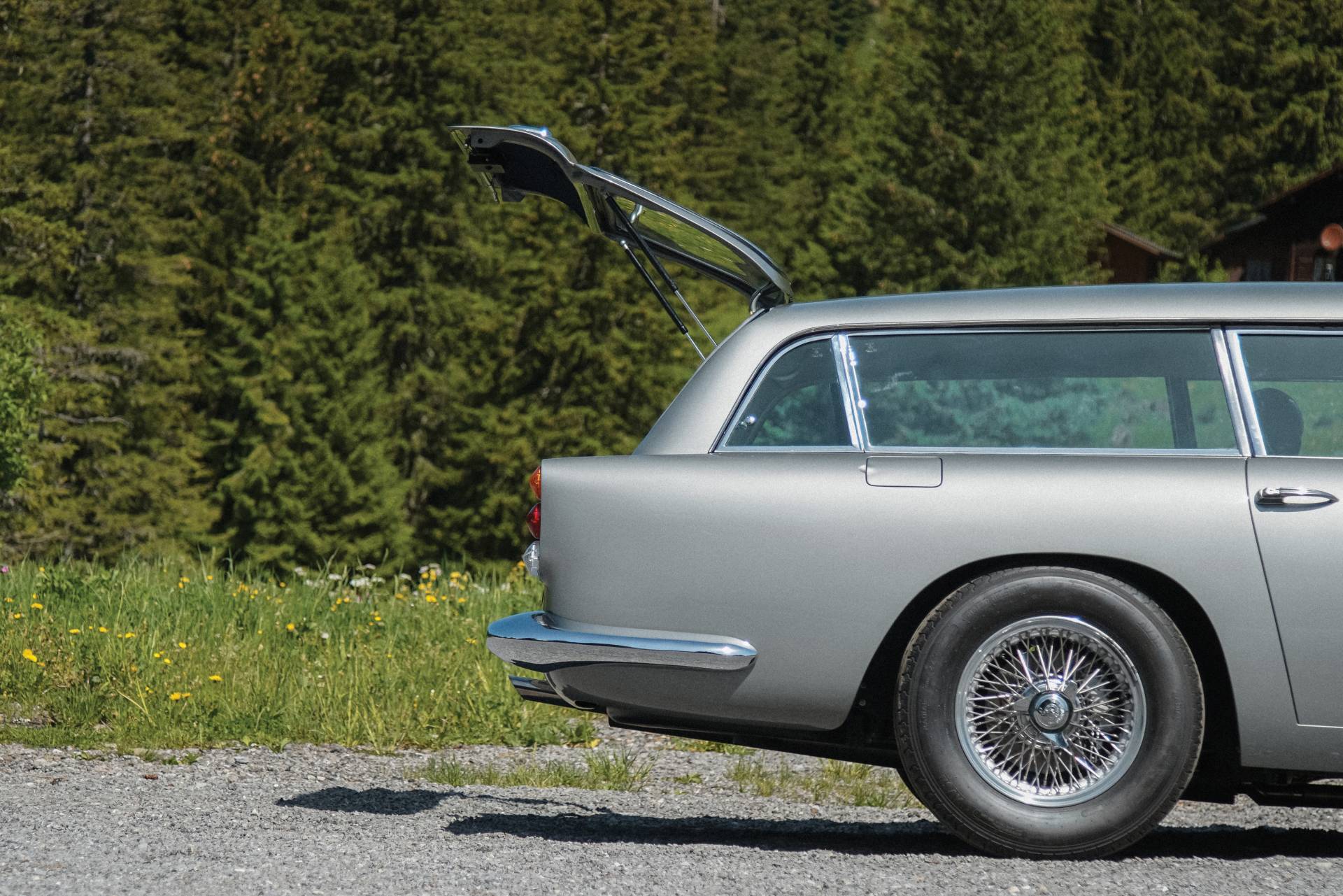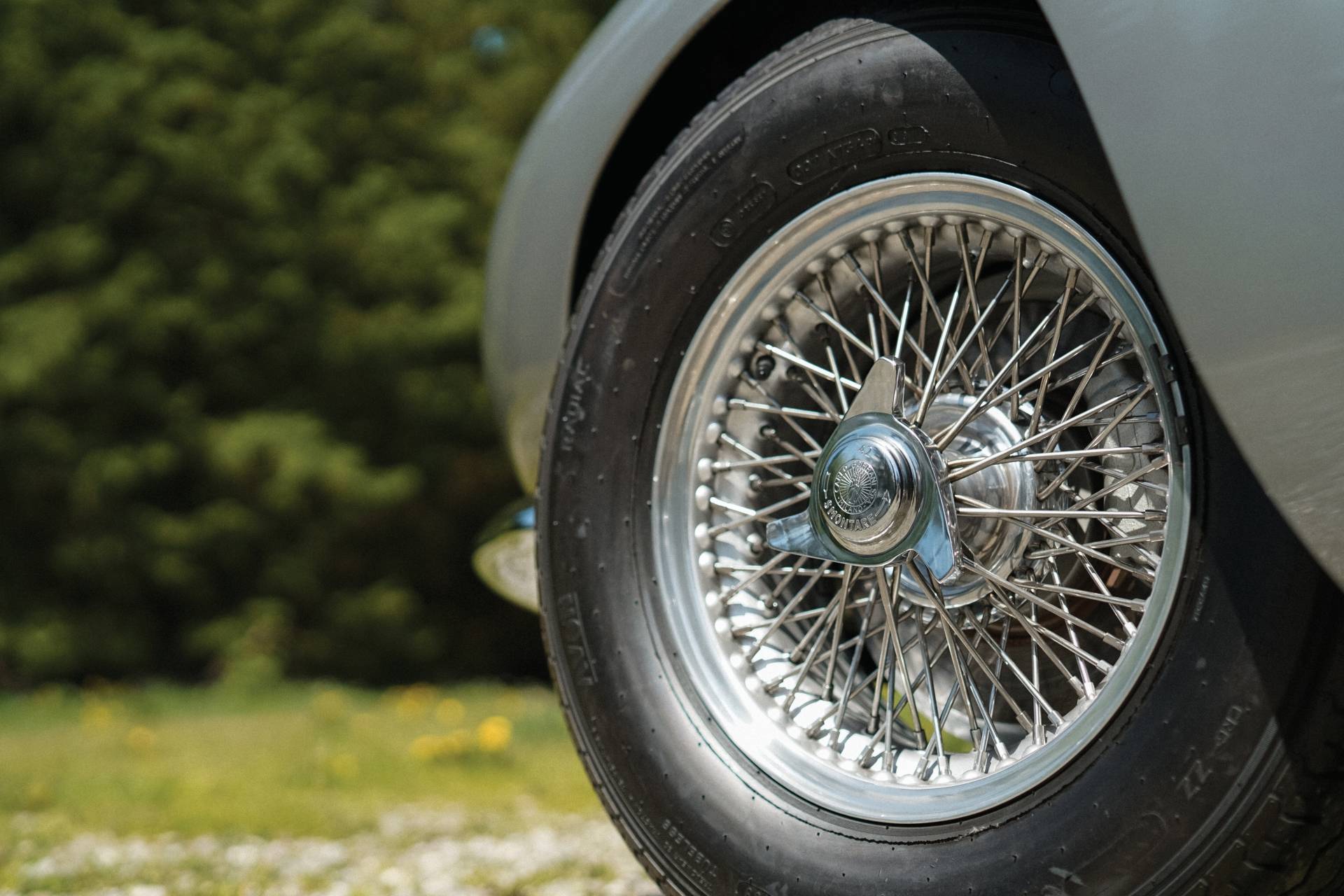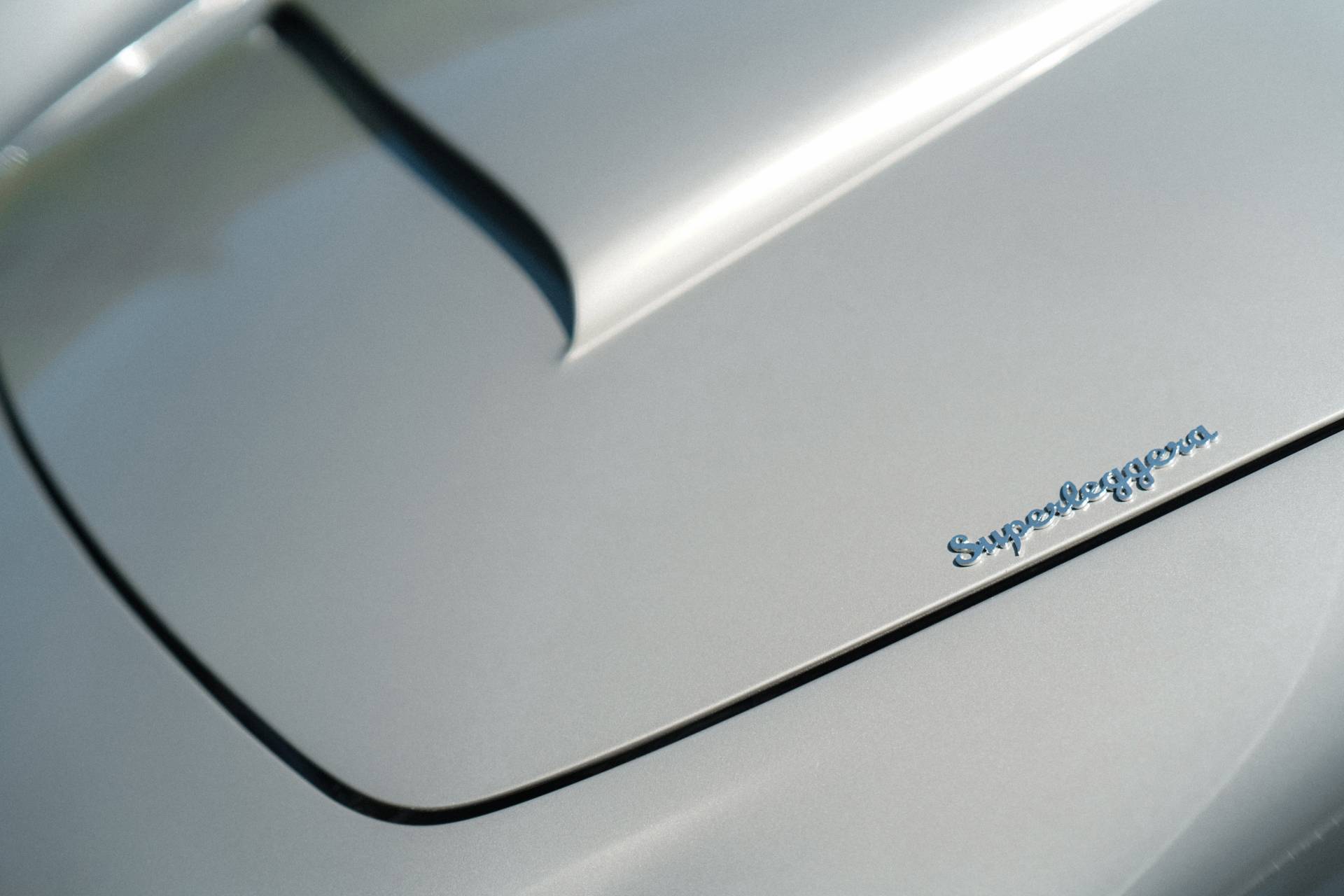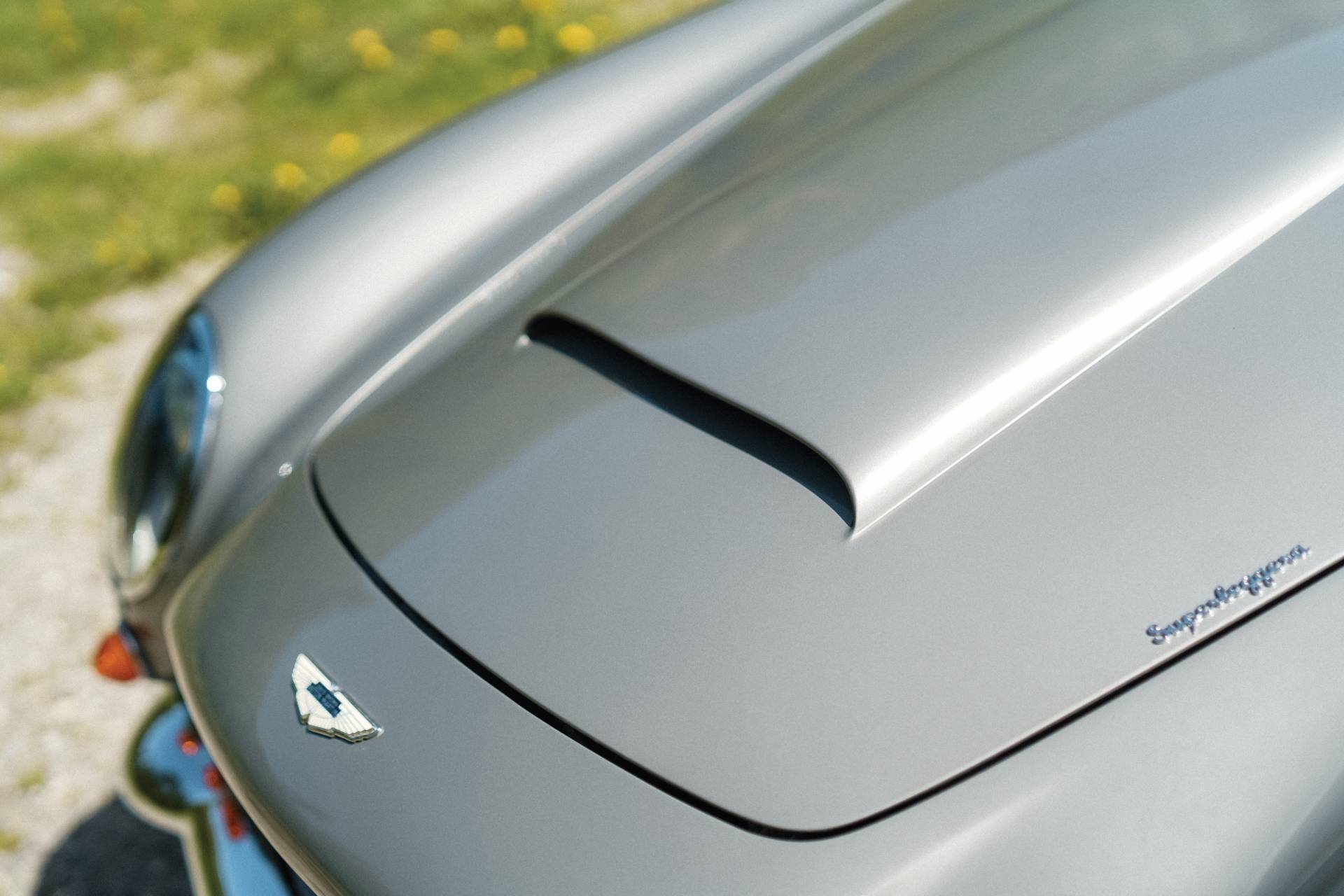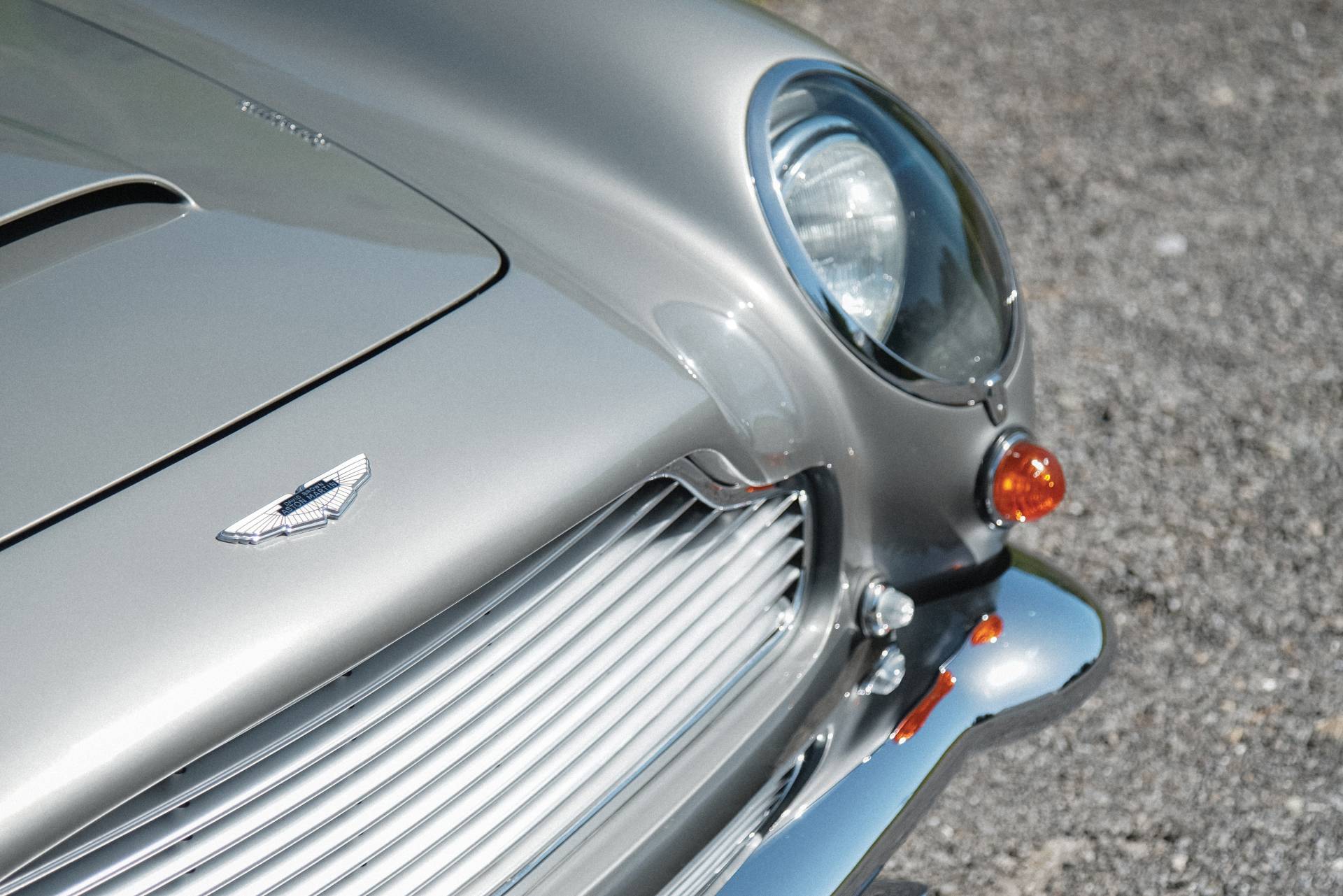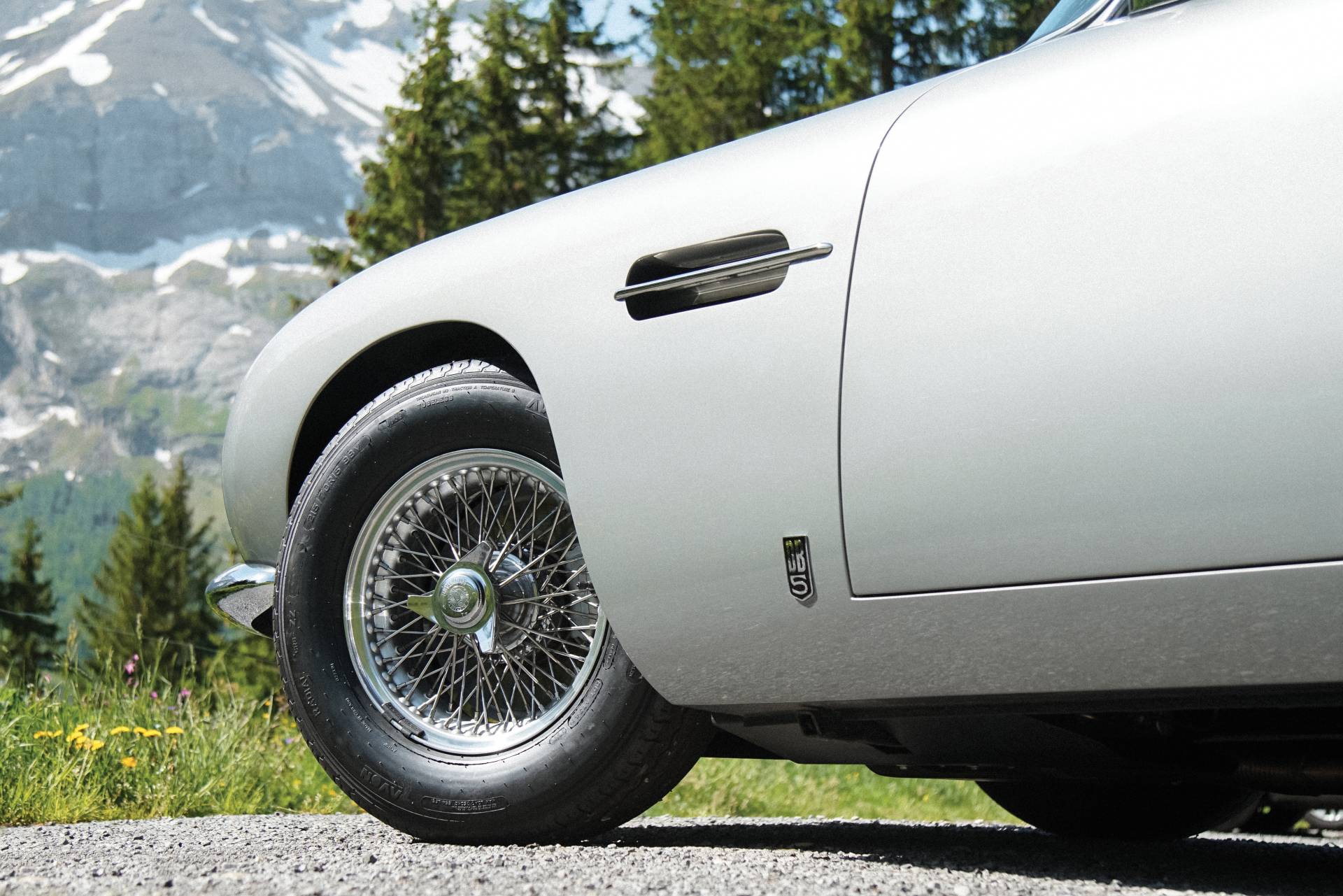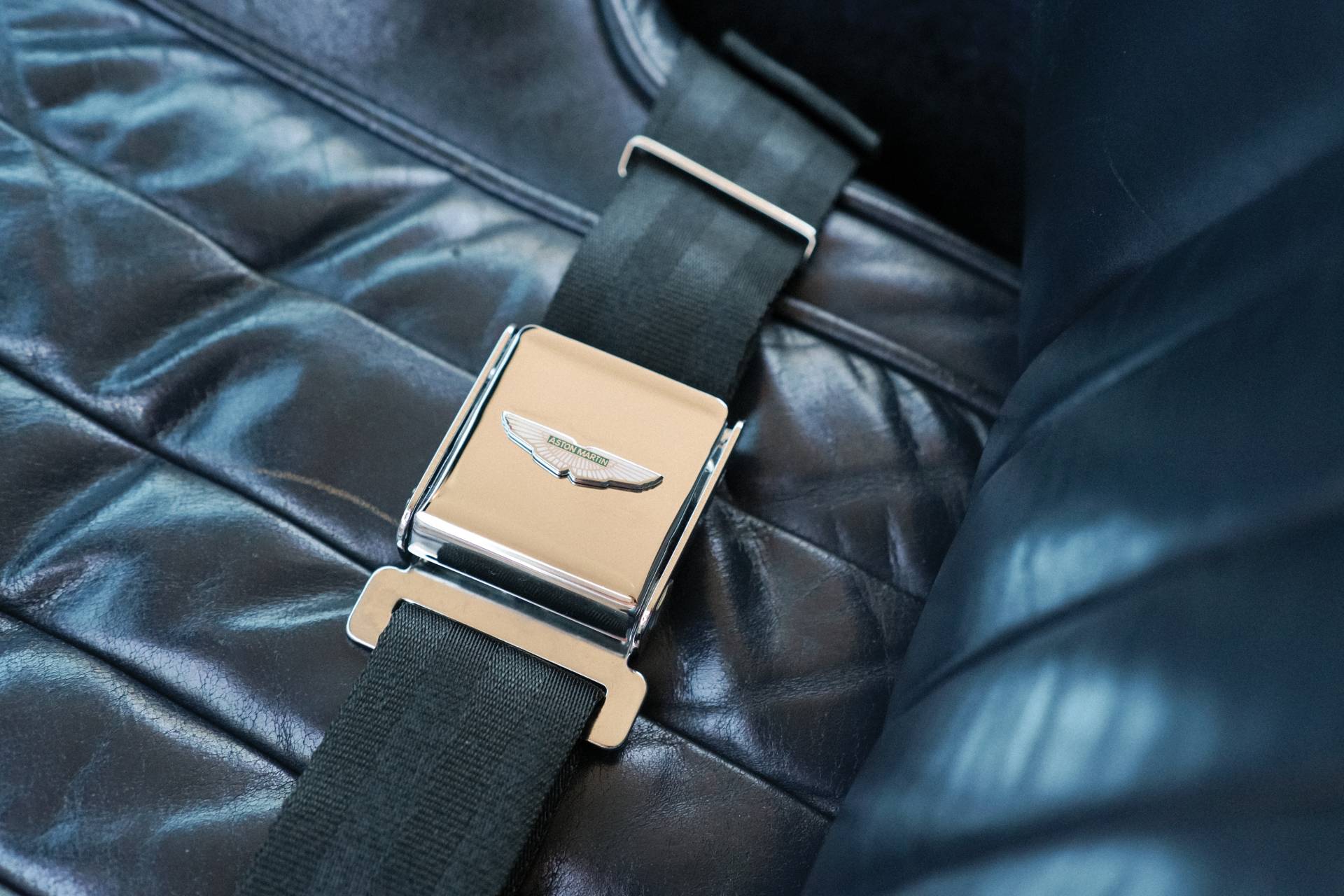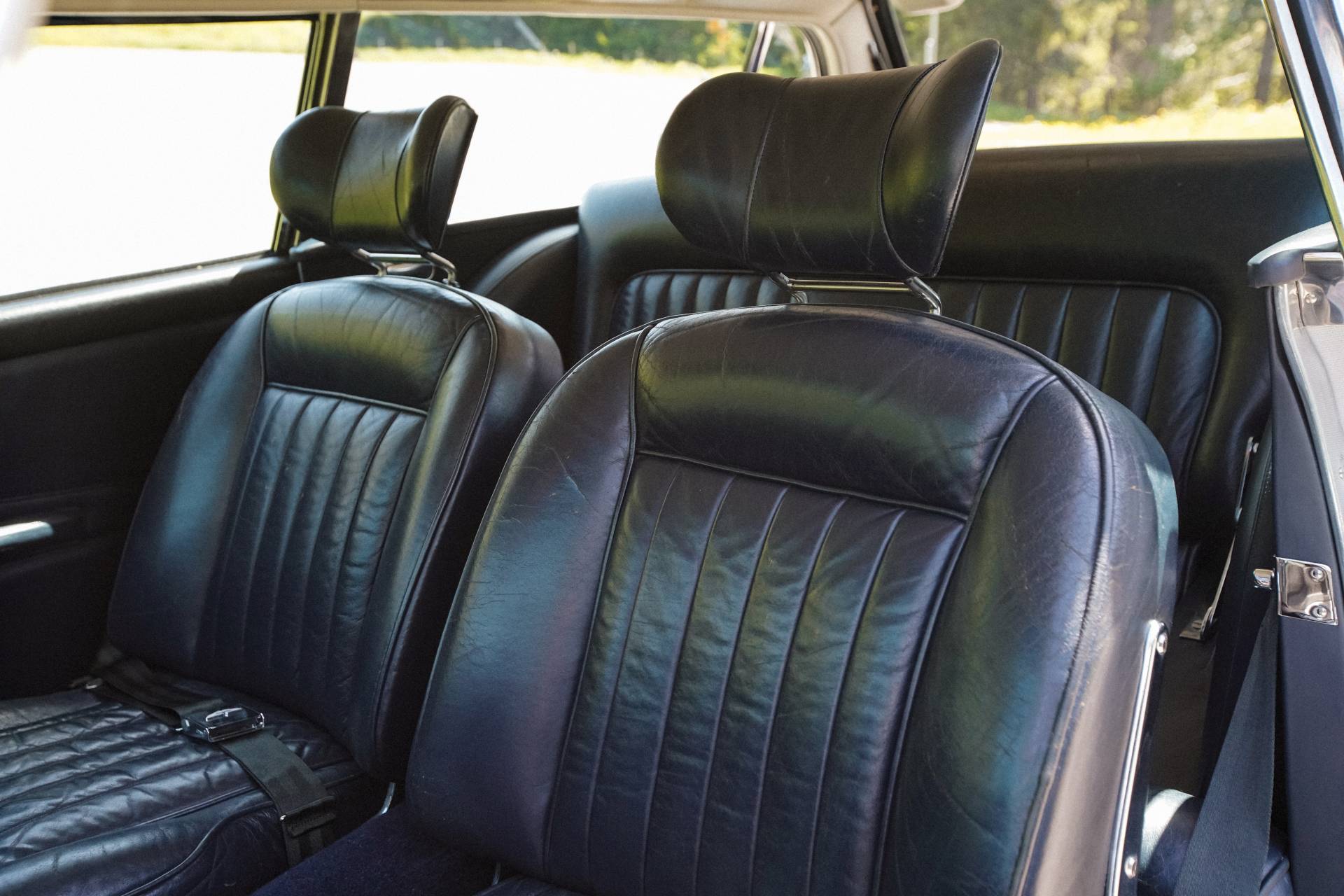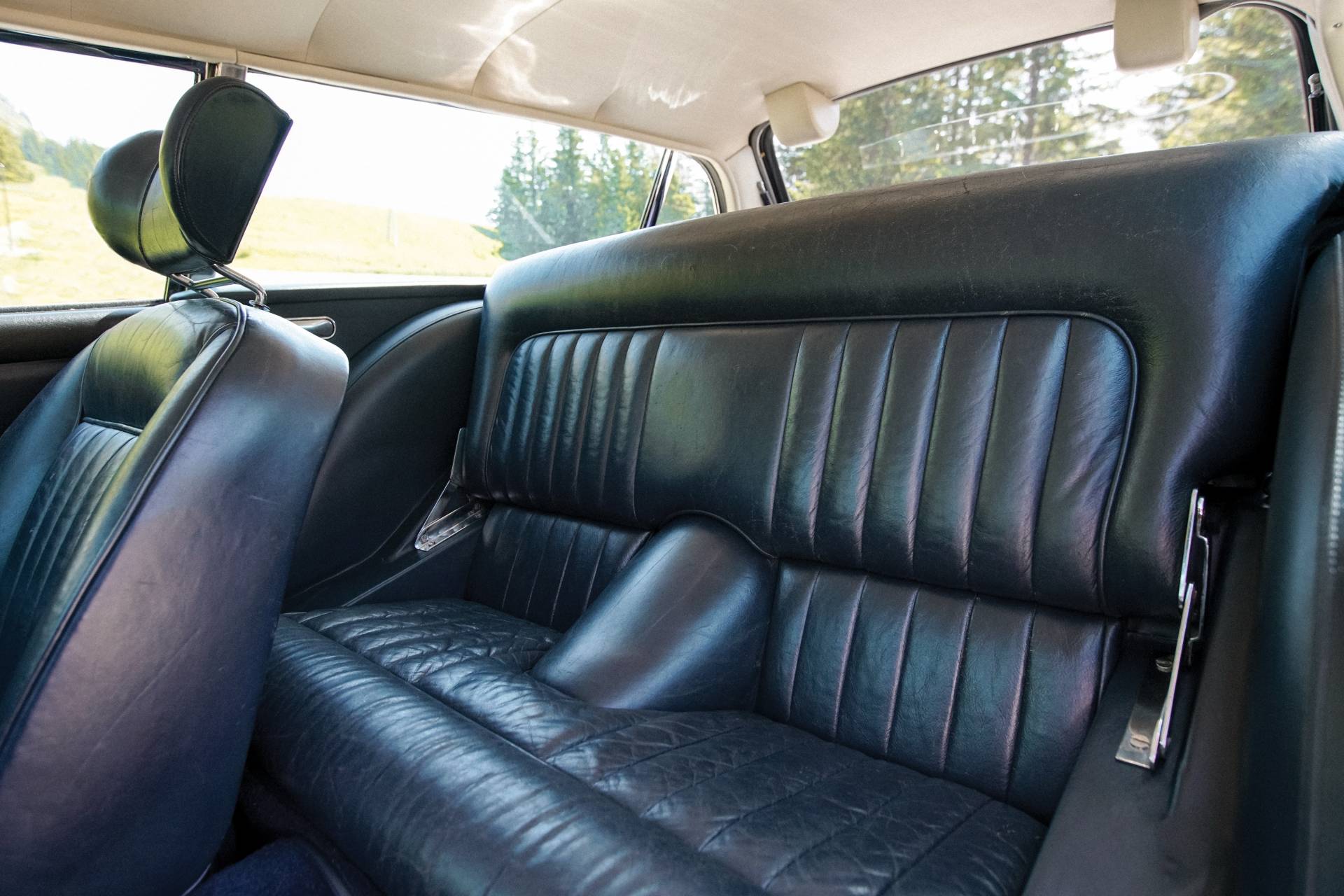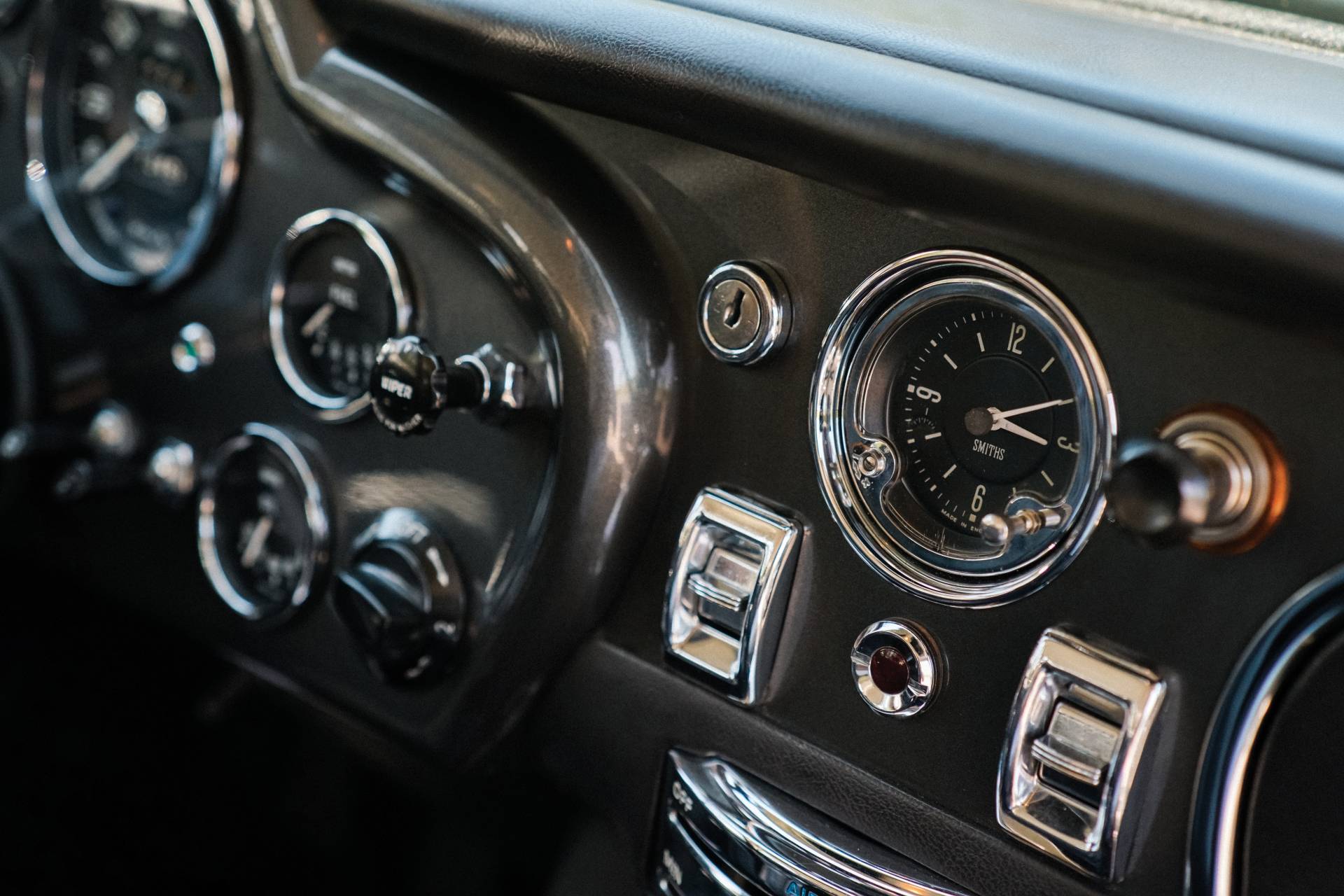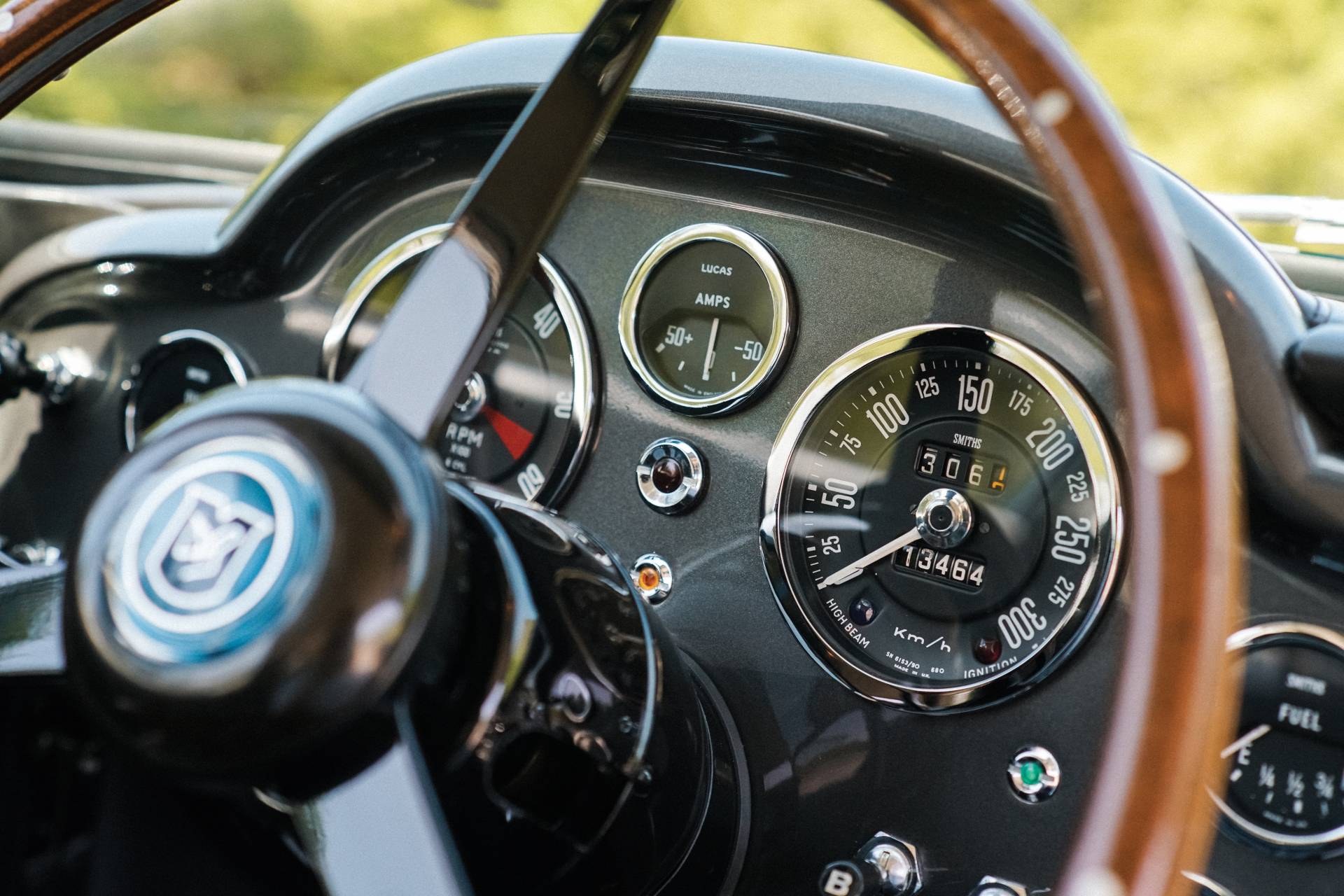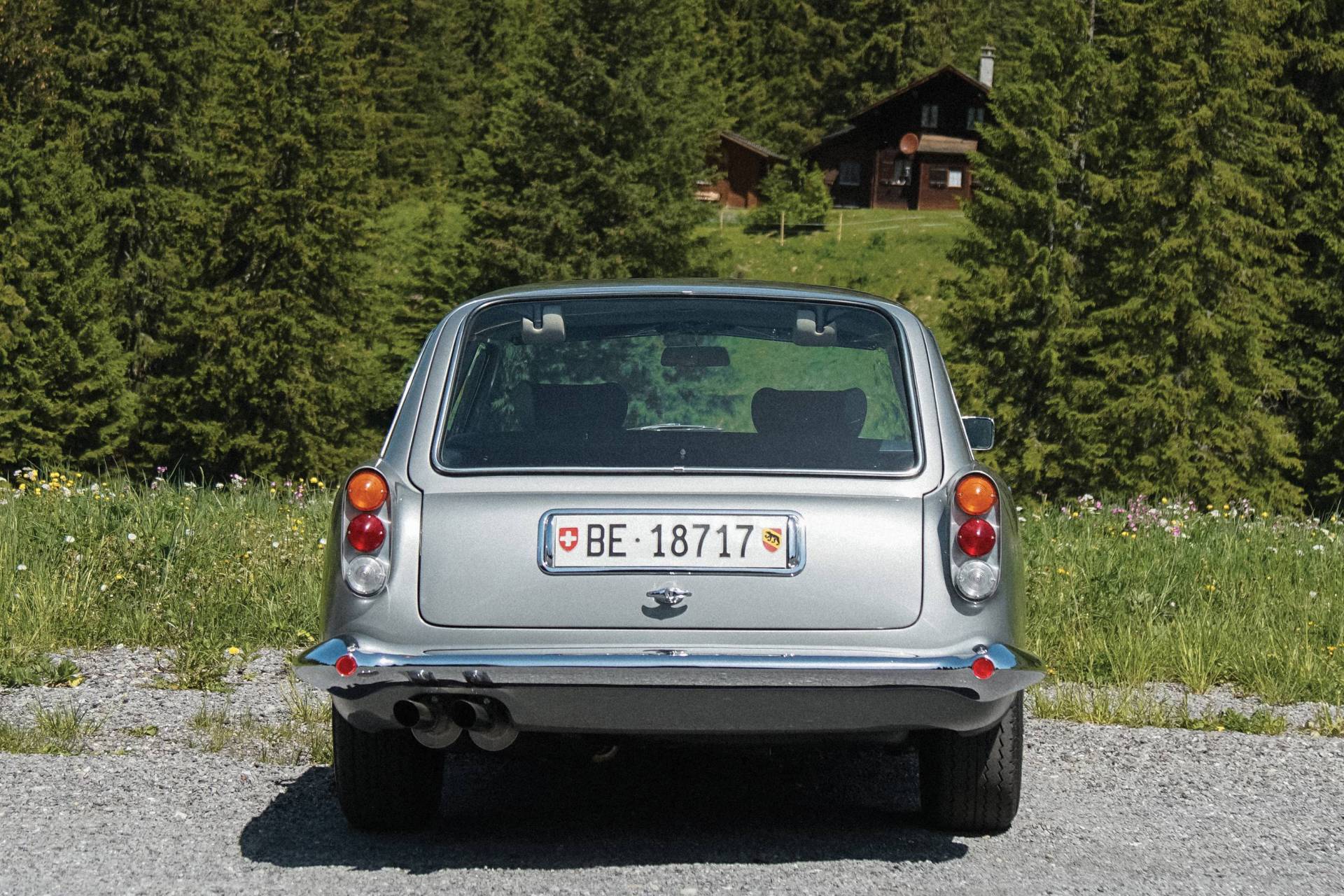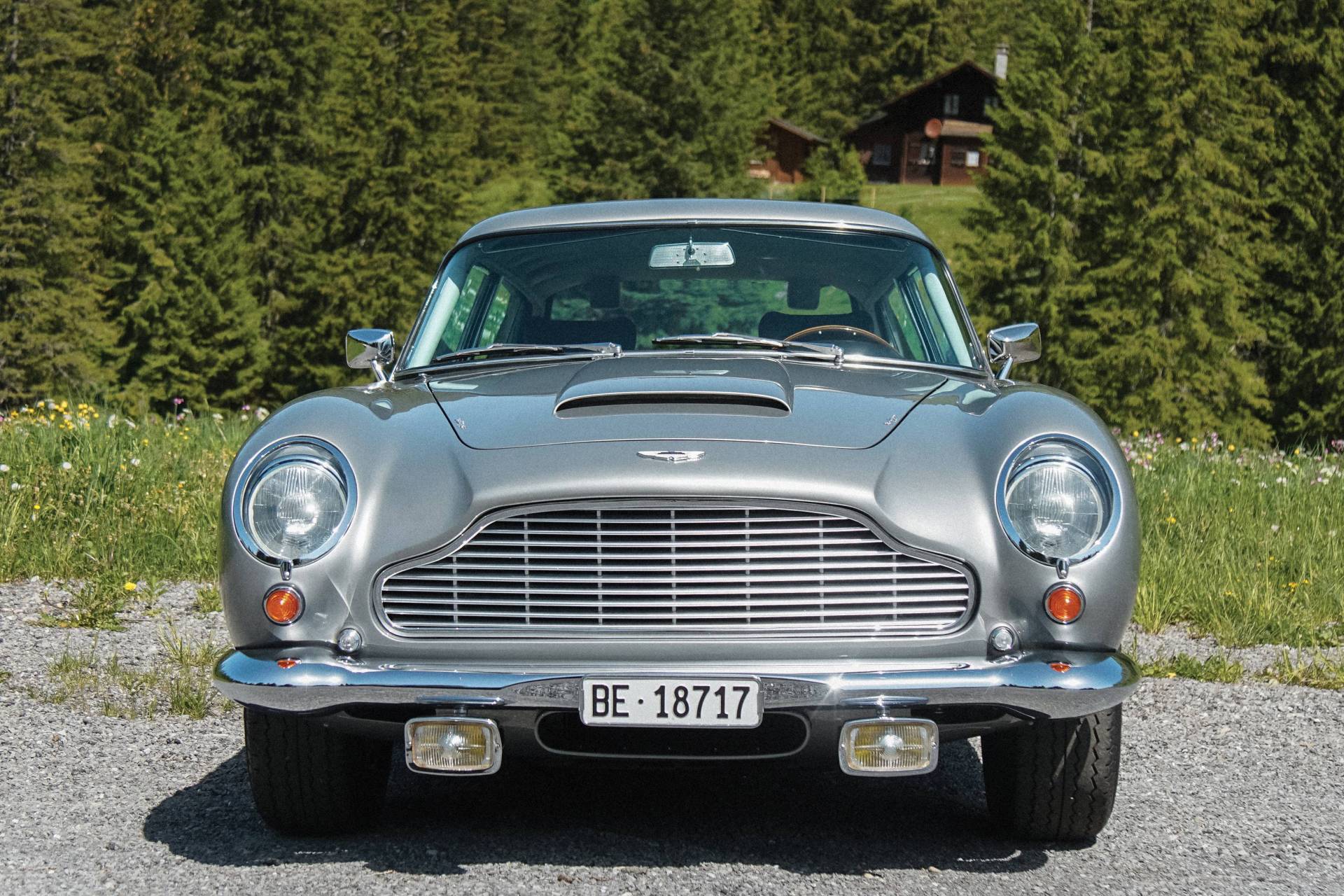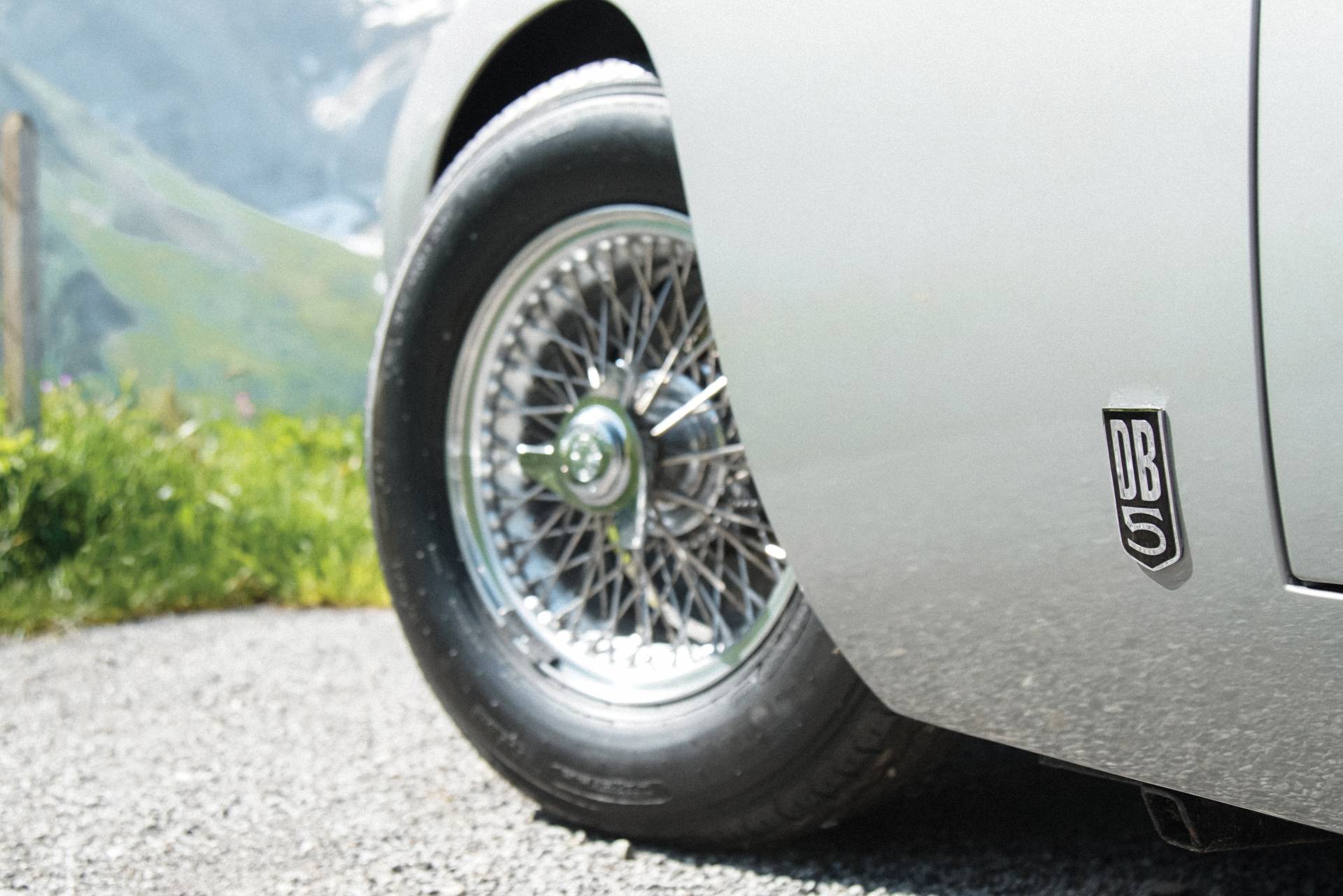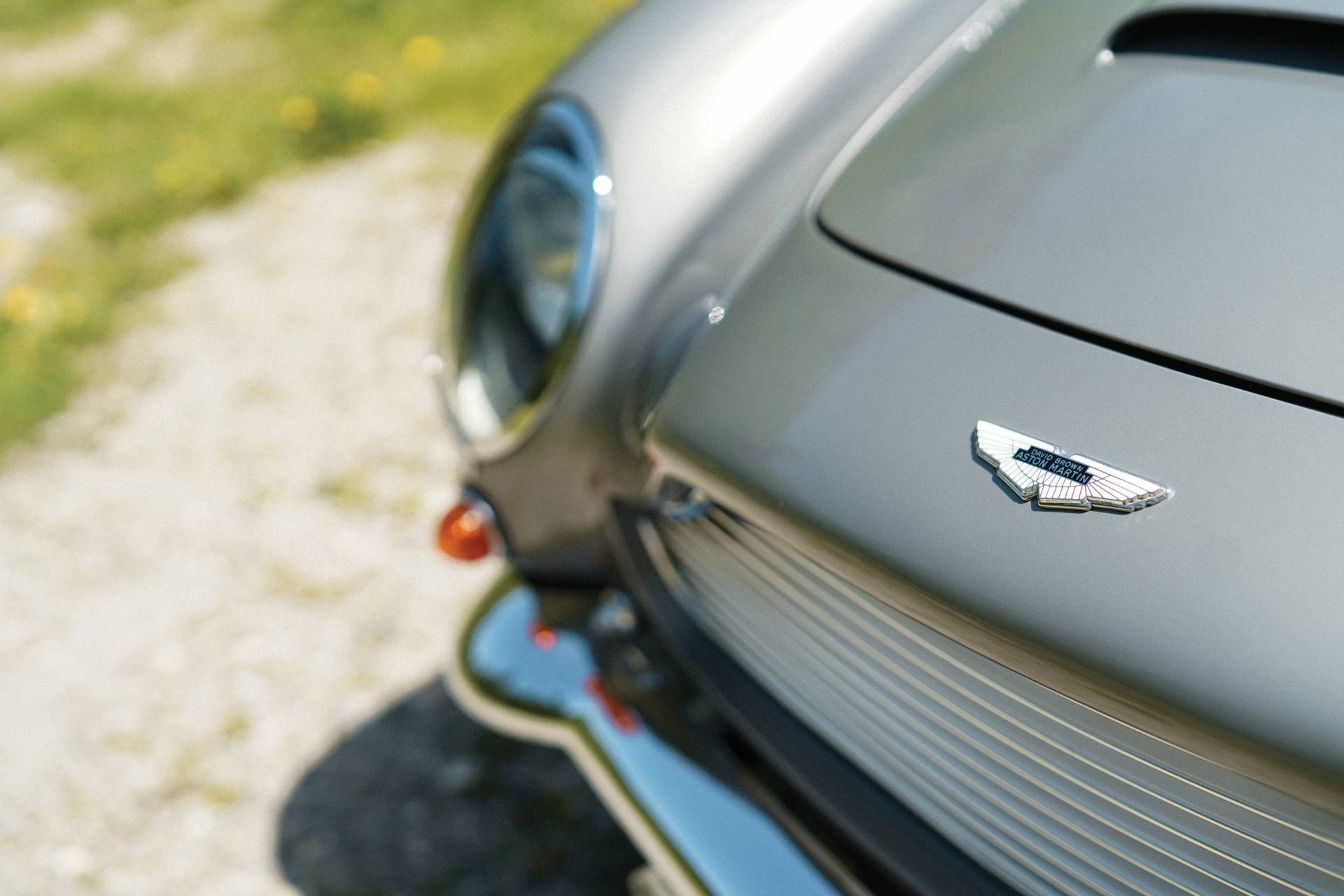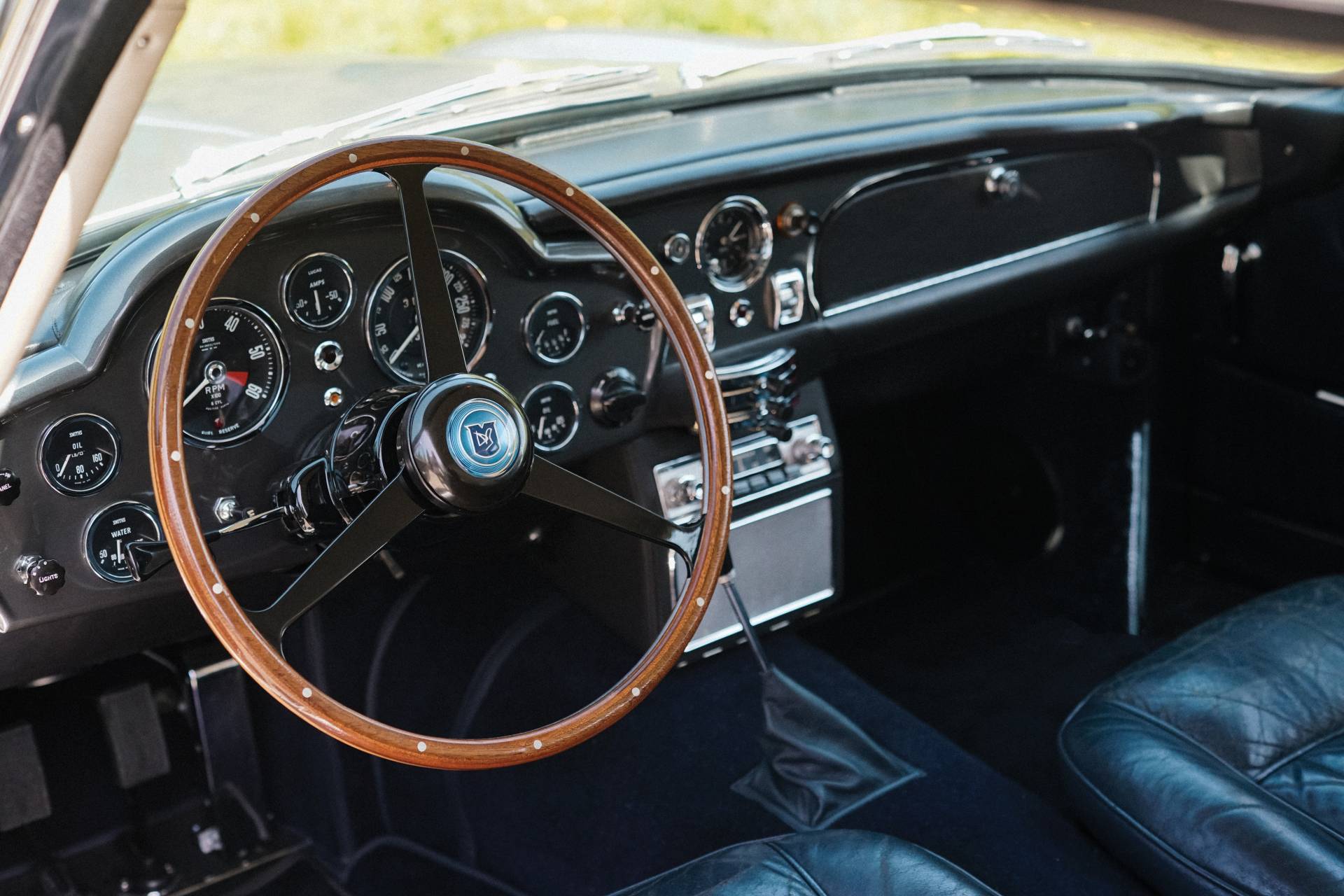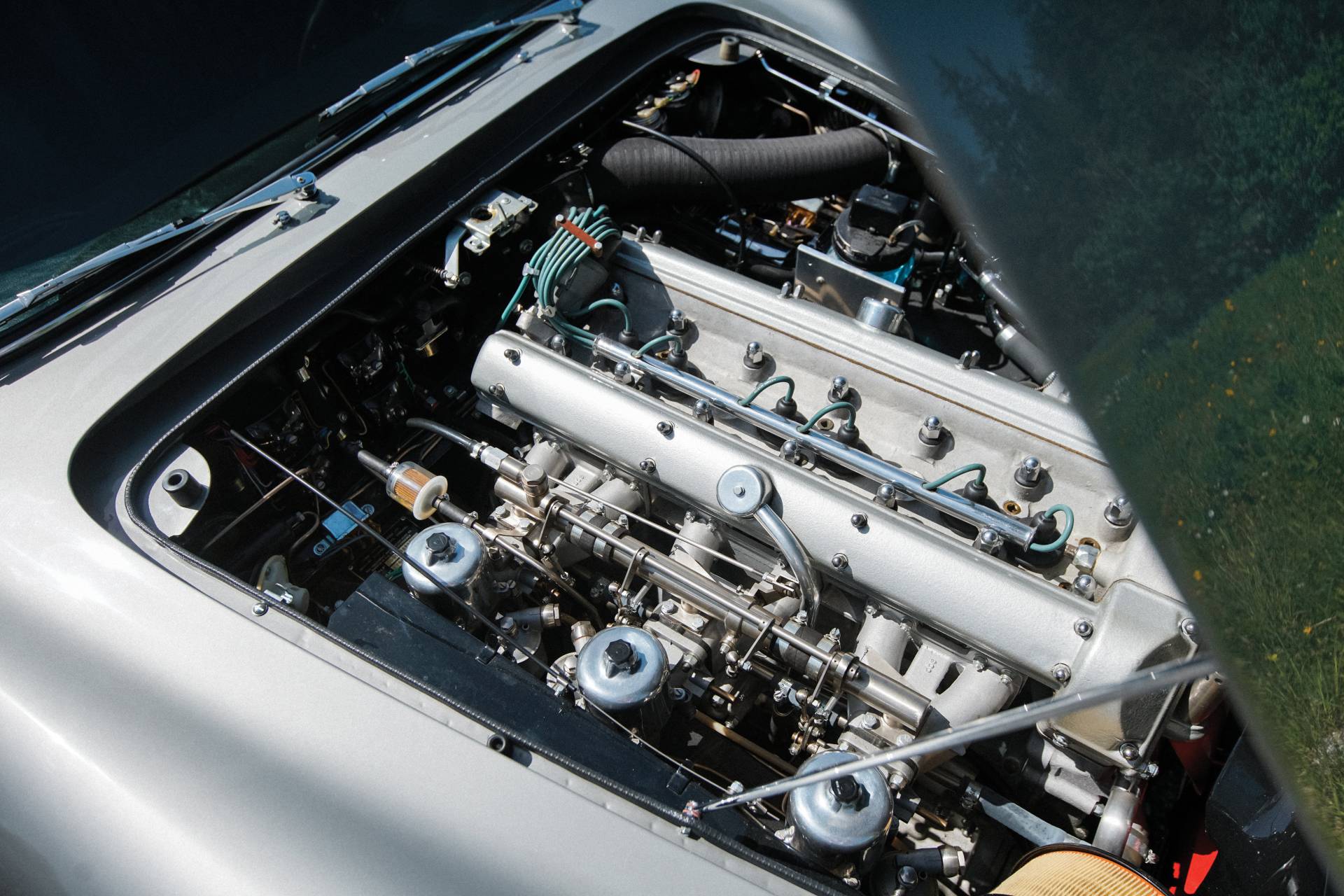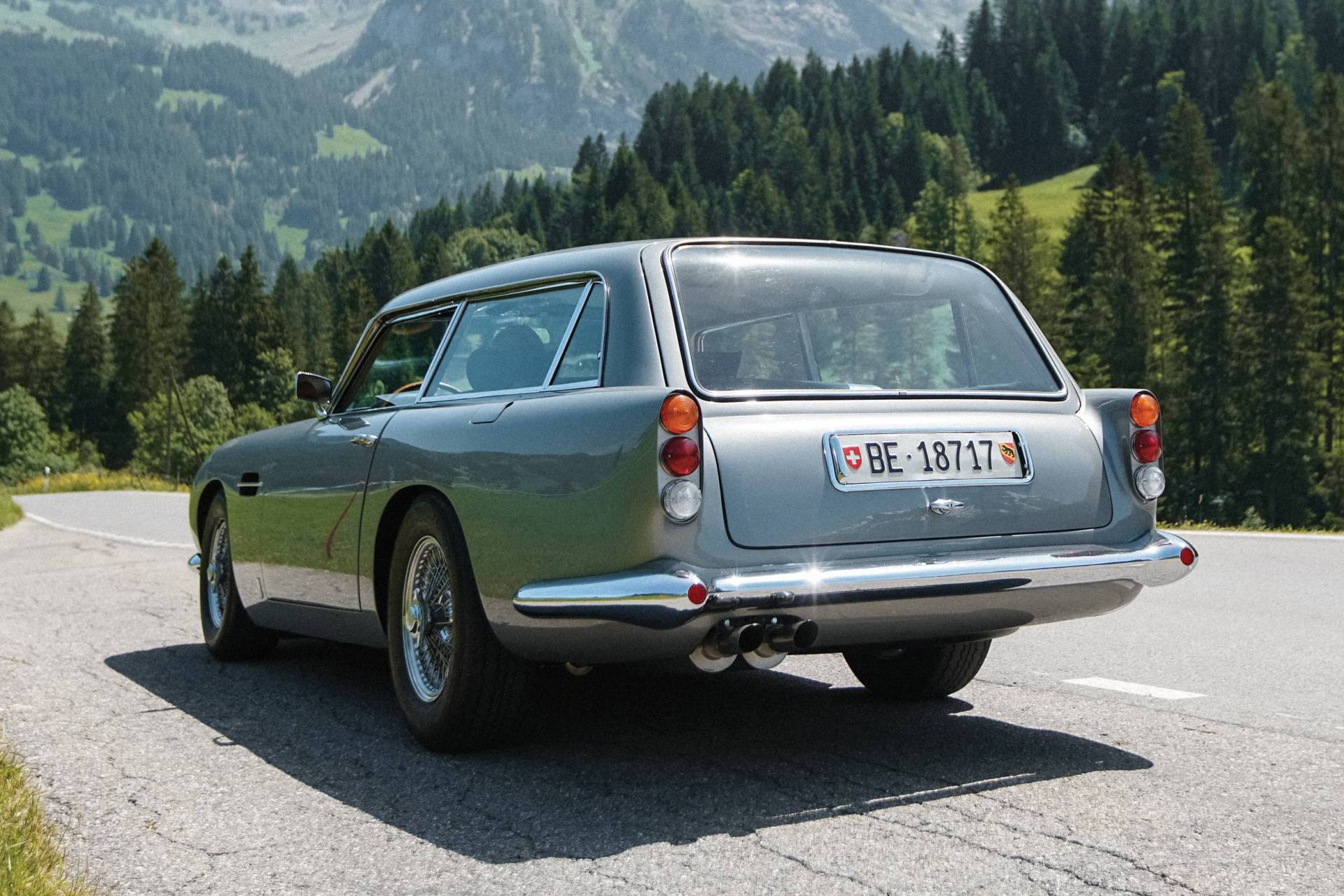For all its James Bond fame, timeless Italian design and stunning performance (for the era), the Aston Martin DB5 was not a very practical vehicle — especially for people whose hobbies included sports.
This was observed first hand by Aston Martin’s owner Sir David Brown. An avid sportsman who liked hunting and polo, he grew frustrated when he realized that his DB5 company car could not fit his polo gear or his dogs in the luggage compartment.
In a similar situation, most people would have just bought a more practical vehicle from another brand. Not David Brown, though. Legend has it that he entered a board meeting attended by some of his engineers, put his hunting dog on the table and said: “Build me something for him to sit in.” The result was a shooting brake built on the DB5 chassis that was so good-looking other people wanted one too.
A total of 12 were built, only four of which are in left-hand drive configuration
At the time, the factory in Newport-Pagnell was too busy building regular DB5s, so David Brown approached Harold Radford with a proposal to handle production of the DB5 Shooting Brake. He accepted and went on to coachbuild twelve DB5 Shooting Brake models, four of which in left-hand drive configuration.
This particular 1965 example with chassis number DB5/2273/L is one of them and has spent all its existence in Switzerland having only three owners from new. Ordered with the very expensive Shooting Brake conversion from the get-go, it is now offered at RM Sotheby’s Monterey sale on August 15.
No one knows how much money the seller will make off this extraordinary rare automobile but expect an exorbitant amount given that the conversion “cost about twice the average price of an English house” at the time it was made. It was so expensive because the car essentially had to be rebuilt from the windscreen back.
Top practicality: up to 40 cubic feet of cargo volume in an Aston Martin DB5
The coachbuilder had to cut away the tubular structure of the roof and extend it with steel fabrications, as well as fit a single-piece rear hatchback. Inside, modifications included folding rear seats which expanded the cargo capacity to more than 40 cu ft (1,132 liters).
This particular car, one of only four in left-hand drive configuration, was specced by the original owner with extras such as a power-operated radio aerial, two safety belts for the front seats, a detachable headrest for the passenger front seat, and the inscription of his initials on each door.
The first owner apparently used the car car as a daily driver for thirty years and repainted it Cumberland Grey in the 1980s. In 2003, the car was purchased by its second Swiss owner who subjected it to a complete body and chassis restoration by Aston Engineering.
Subjected to two comprehensive restorations and upgrades, the last one in 2009
Work also included repainting the body Grigio Quartz, reinforcing the steel tubing in the roof, and replacing the original DB6 Vantage taillights with DB5 lights as featured on David Brown’s original shooting brake. The engine was upgraded as well to Aston Engineering’s 4.2-liter specification and the automatic transmission was replaced with a five-speed ZF gearbox.
Also read: James Bond’s Real Aston Martin DB5 To Cross The Auction Block
The third and current owner bought the car in 2009 and commissioned an even more detailed overhaul to Aston Martin specialist R.S. Williams. The engine was upgraded to 4.7 liters and fitted with the proper triple SU HD8 carburetors, the suspension received R.S. Williams springs and shock absorbers, as well as period correct 15-inch-diameter wheels.
Finally, the body was repainted in the original shade of Silver Birch and the Cavalry Grey carpets were replaced with Dark Blue to match the re-trimmed interior. Fiamm air horns were also fitted, in accordance with the original spec sheet.



